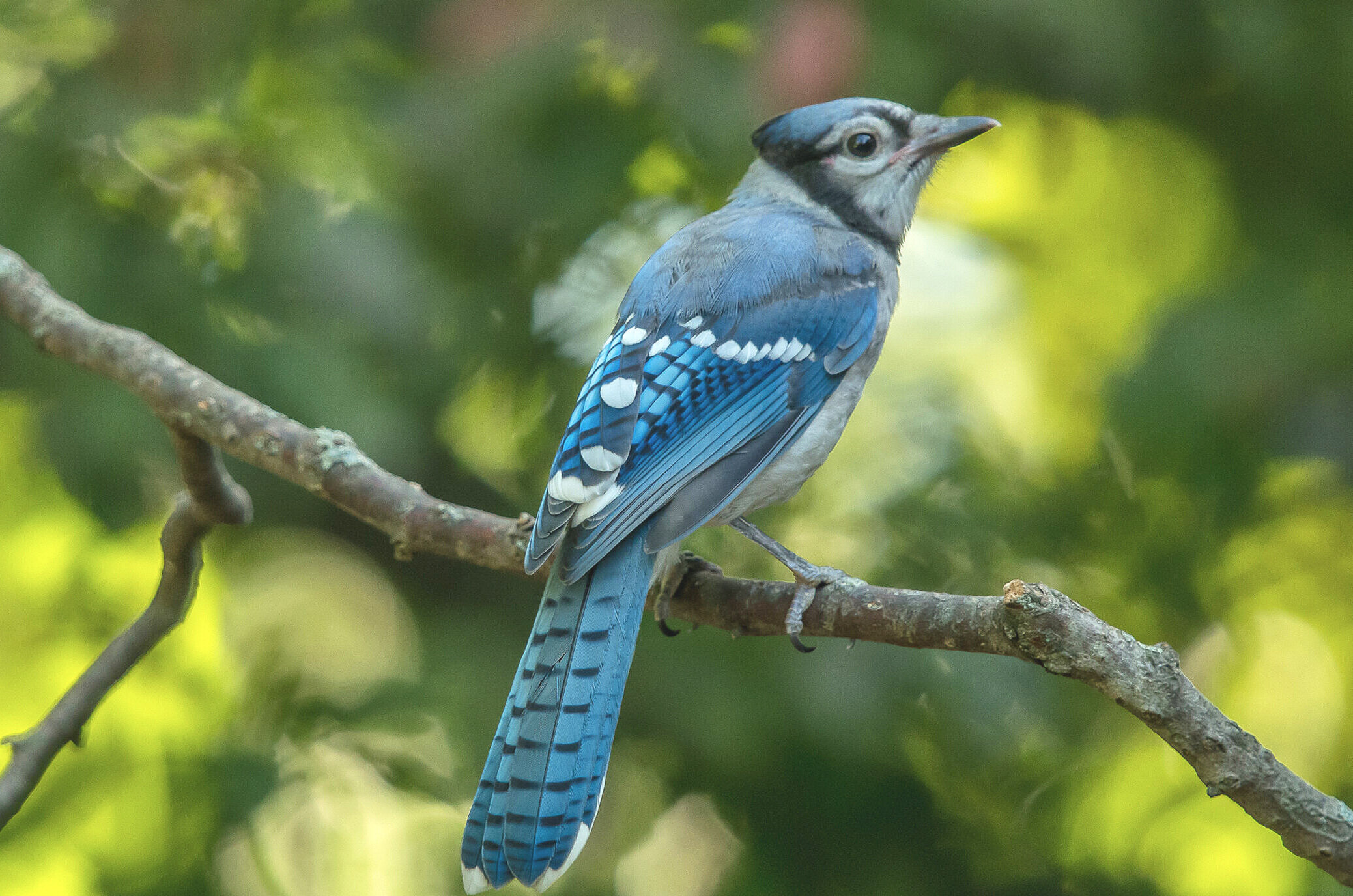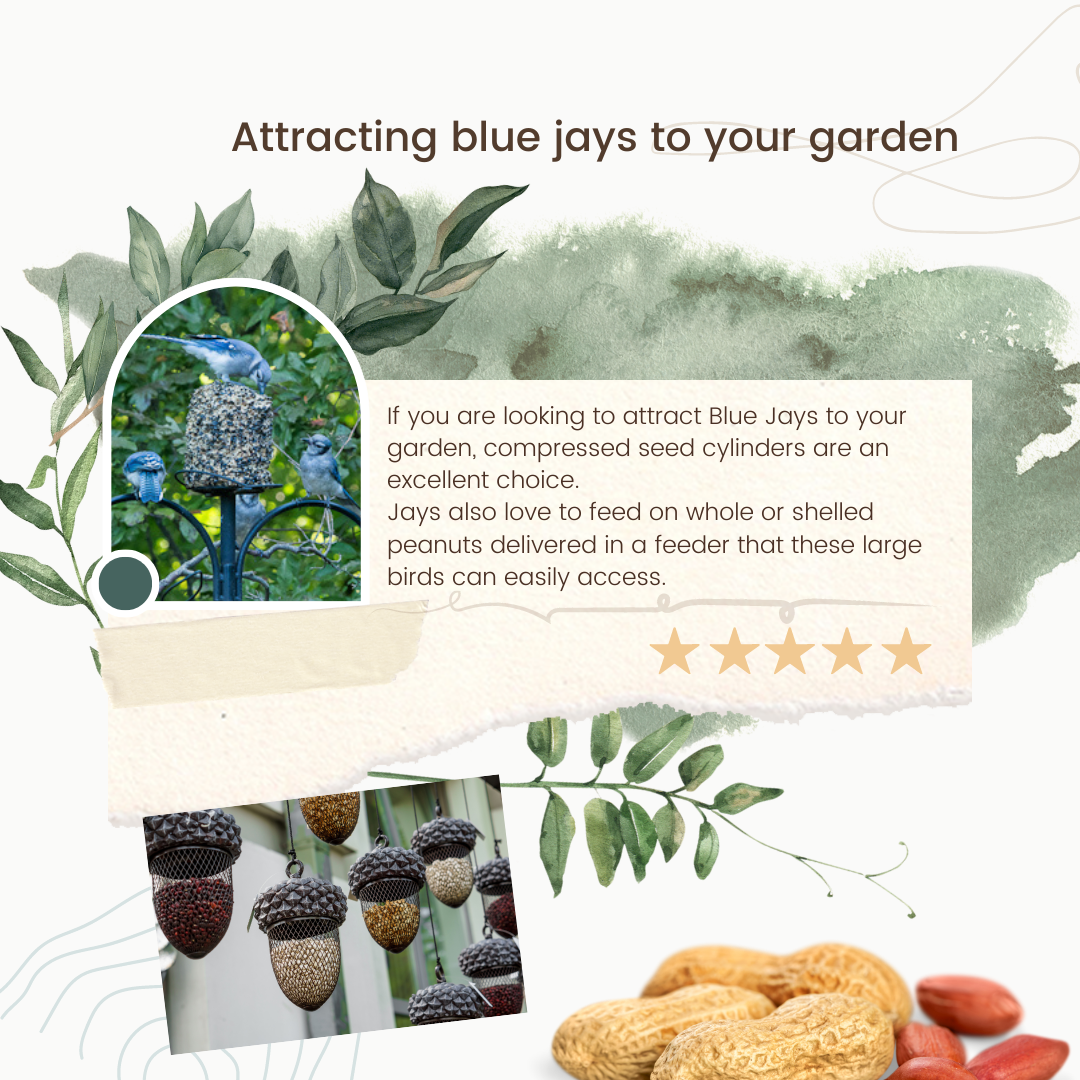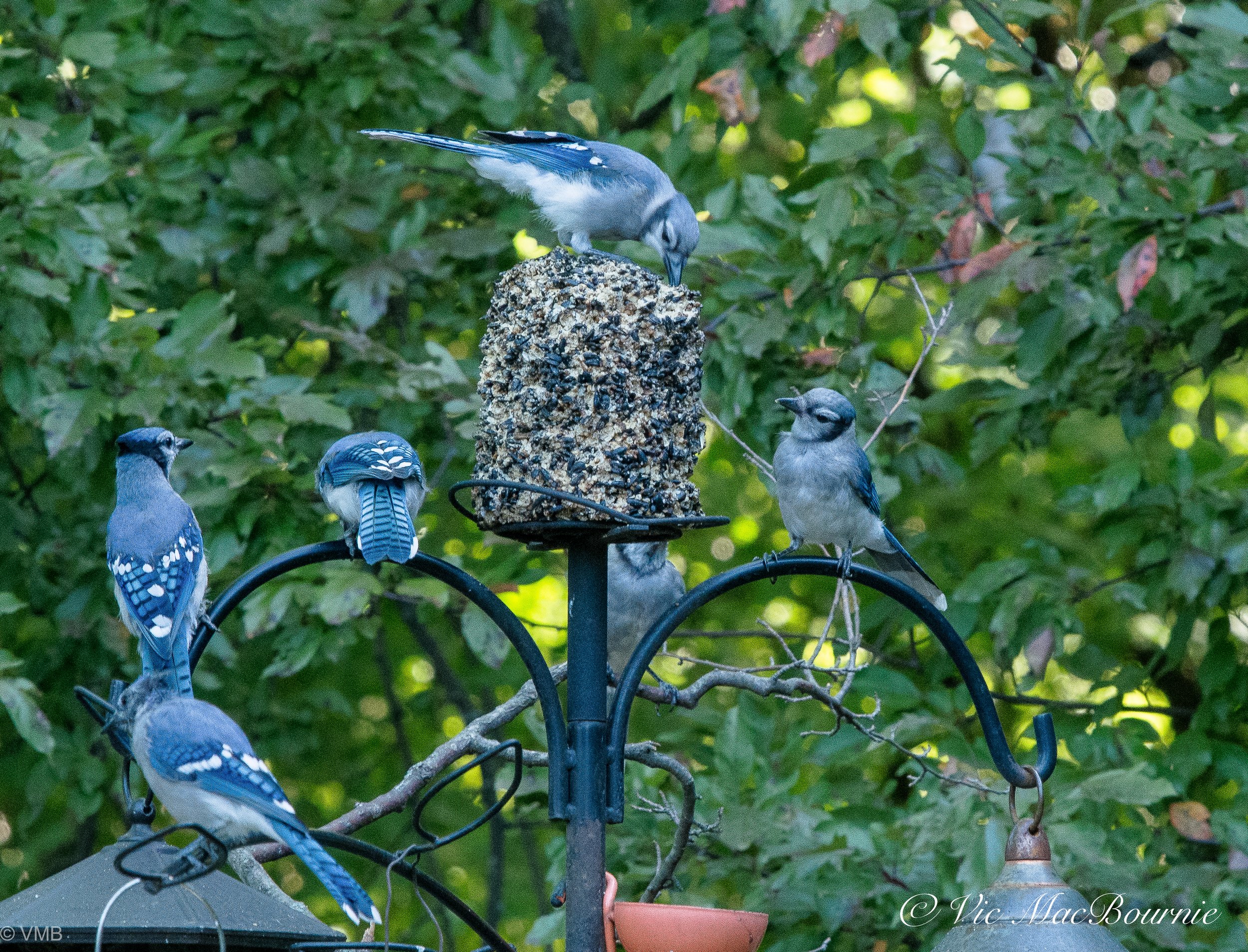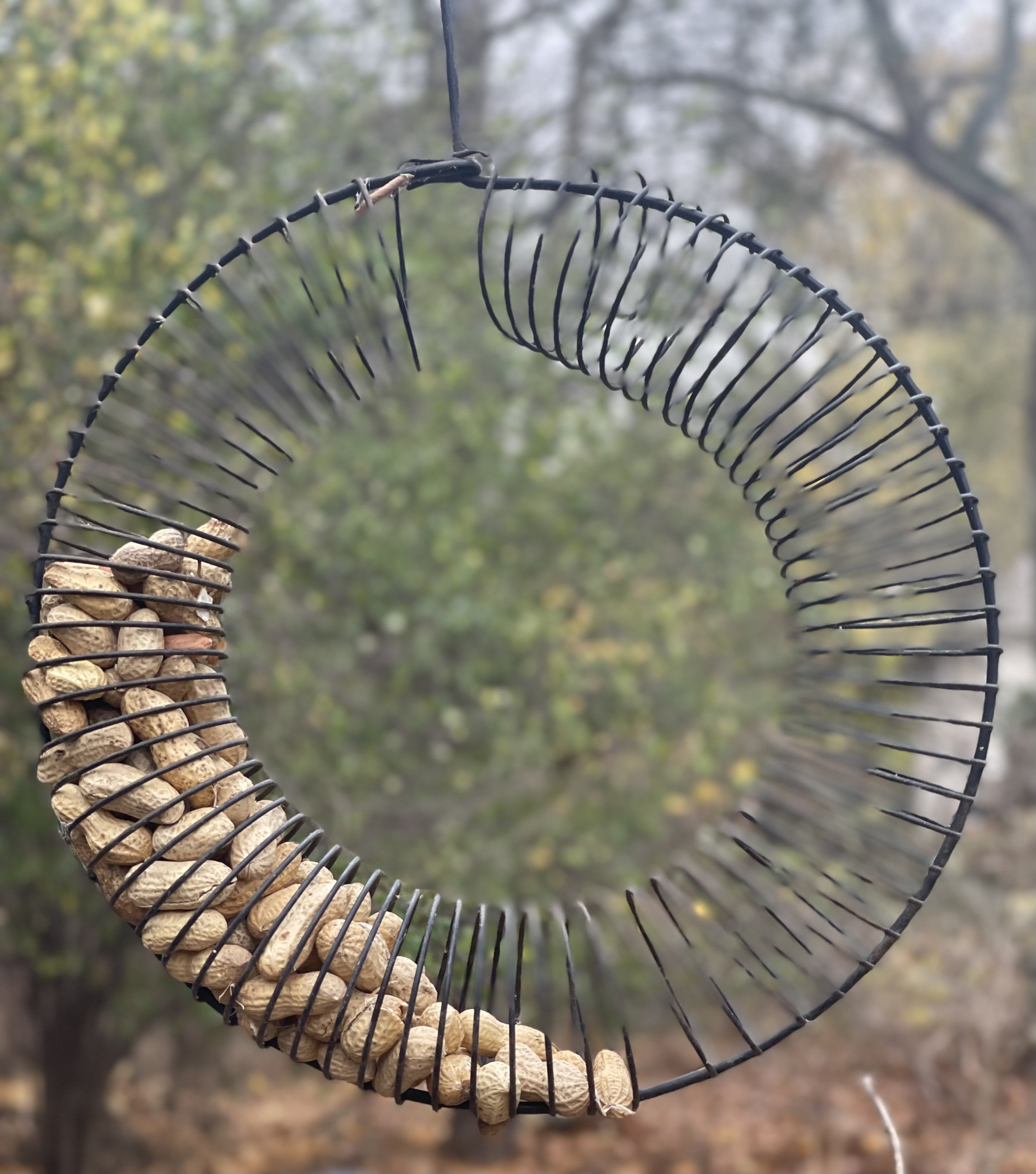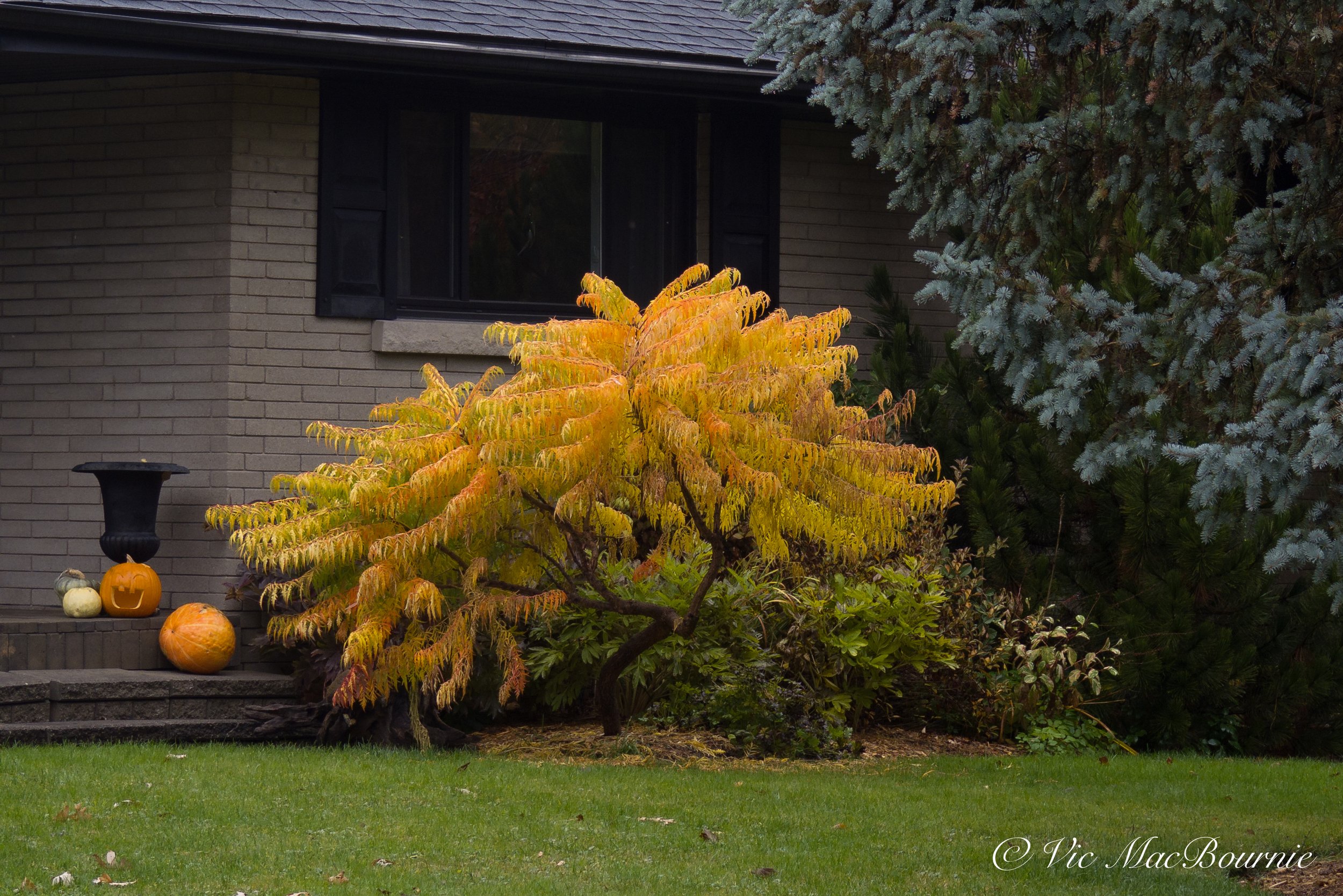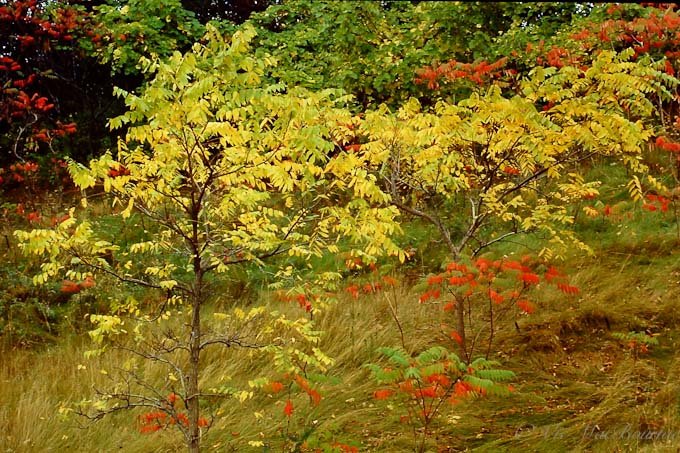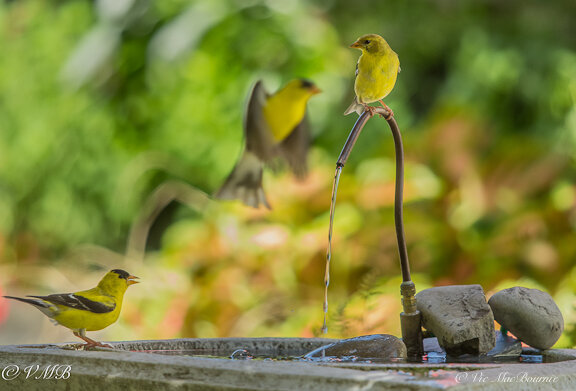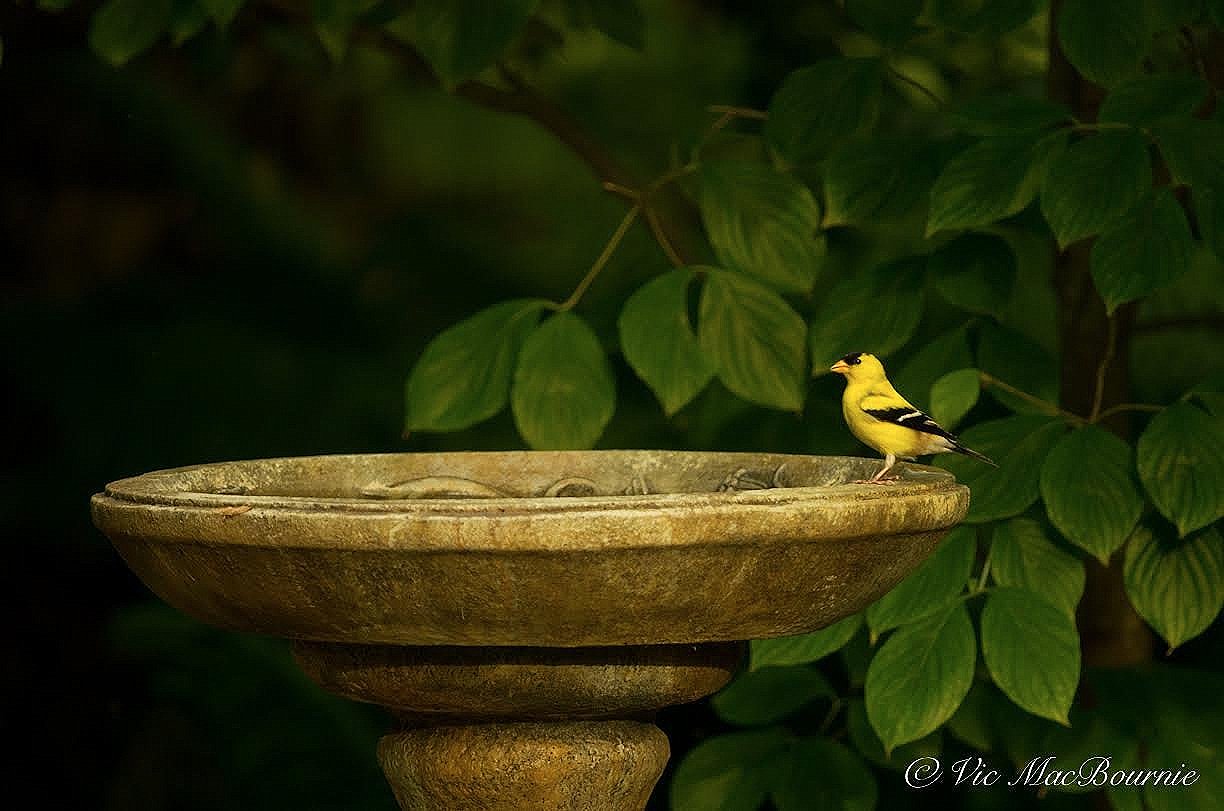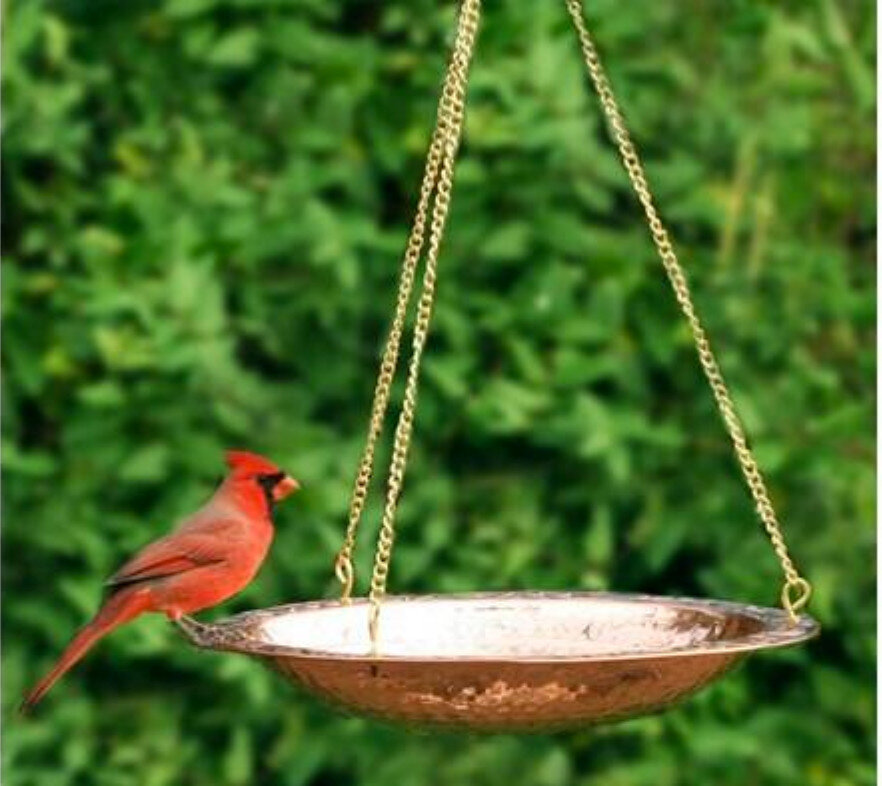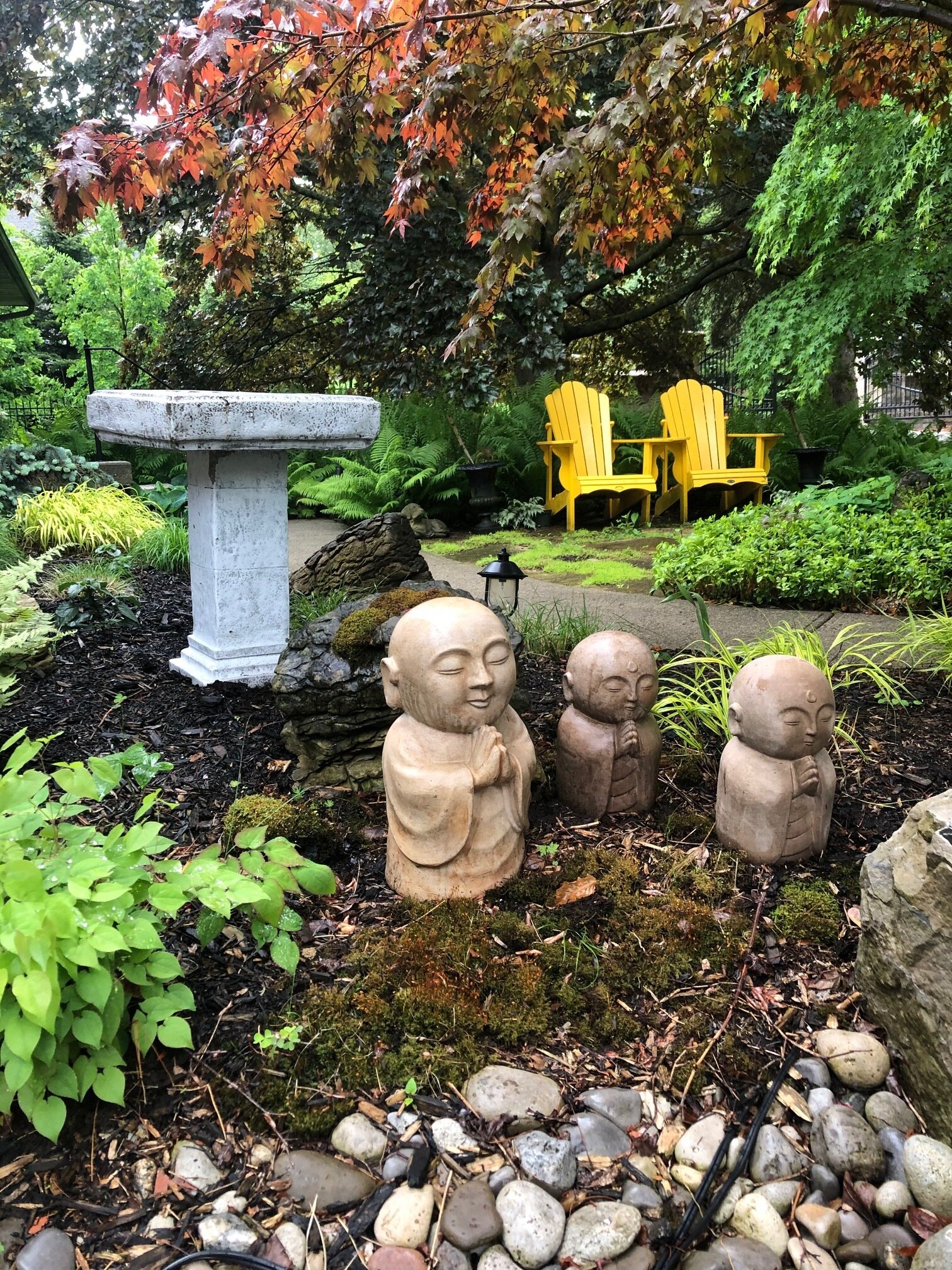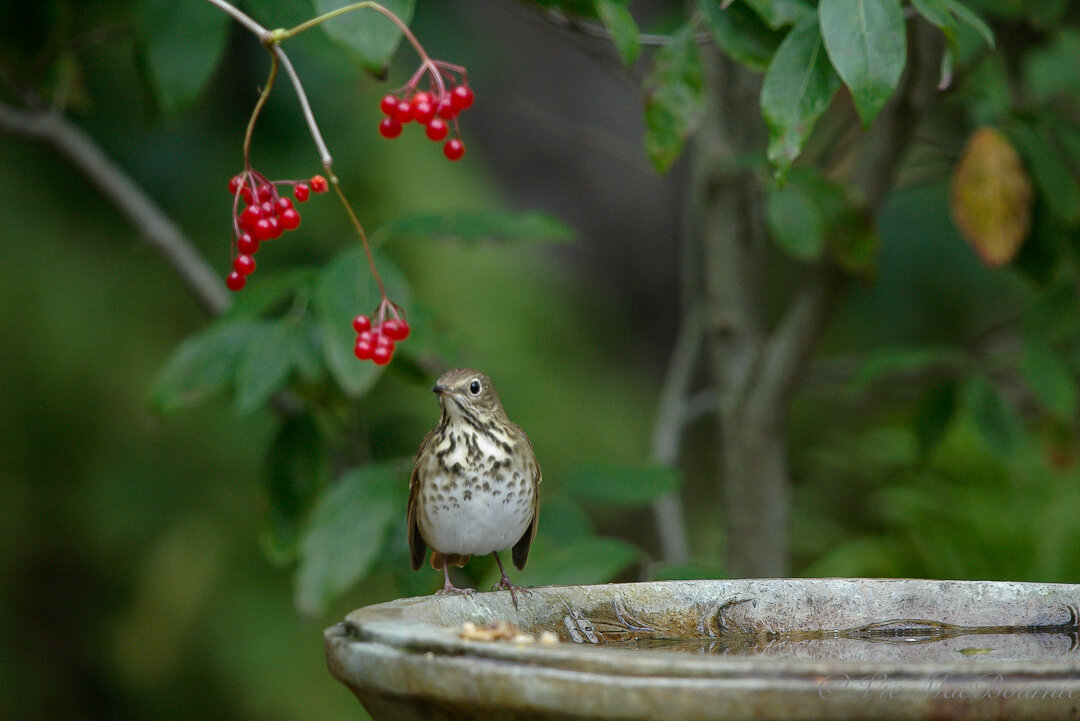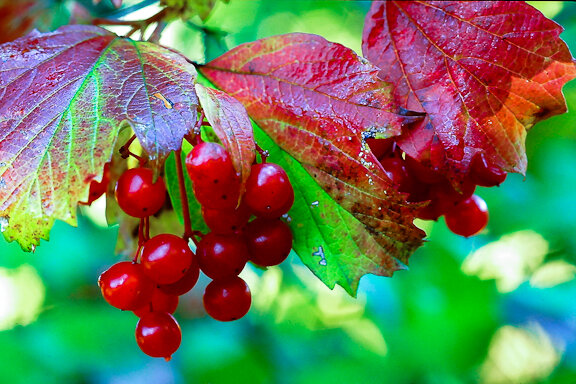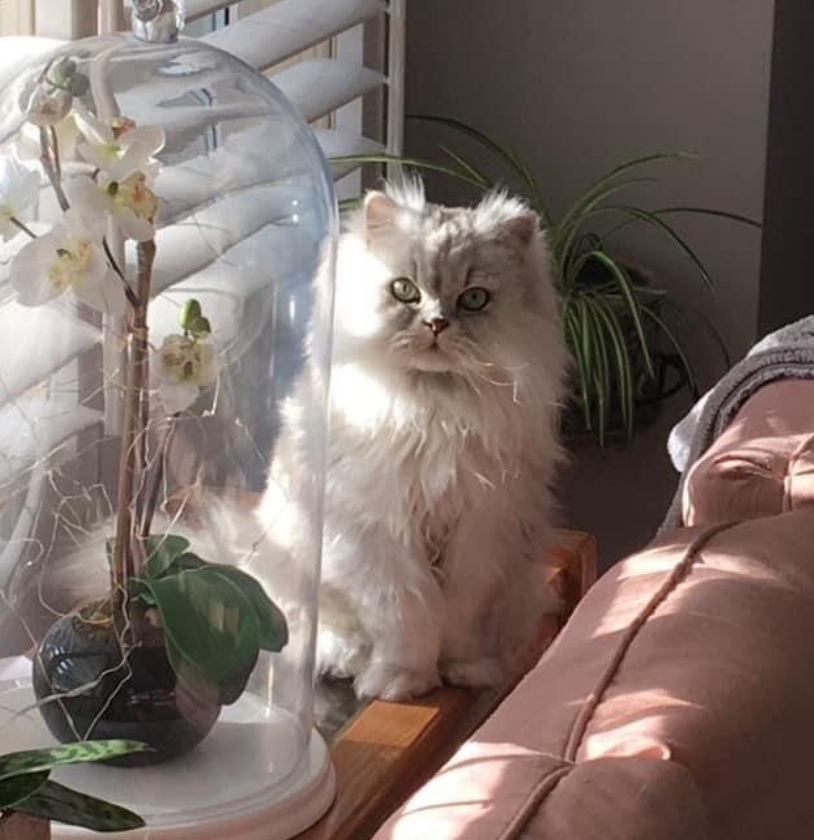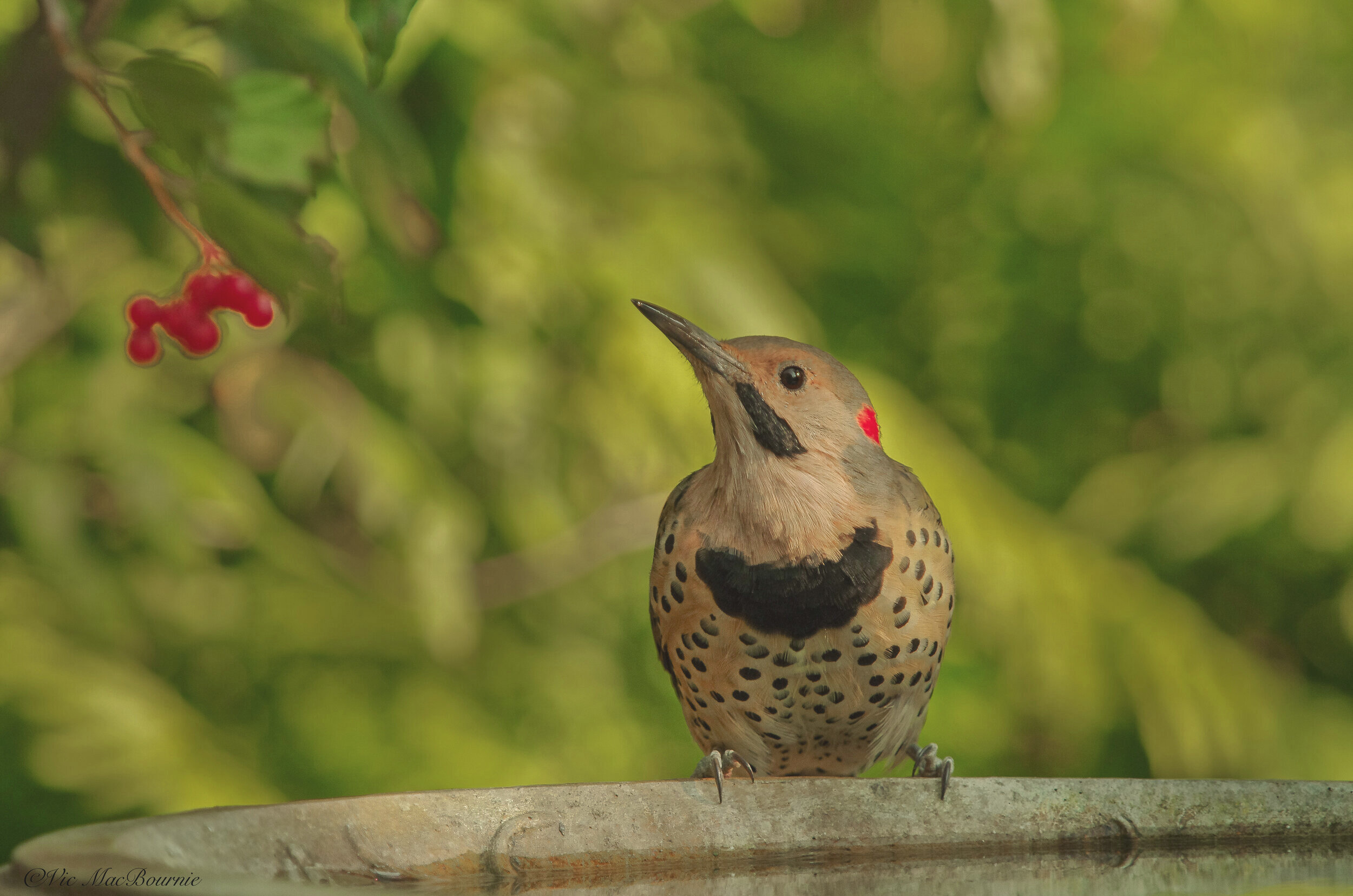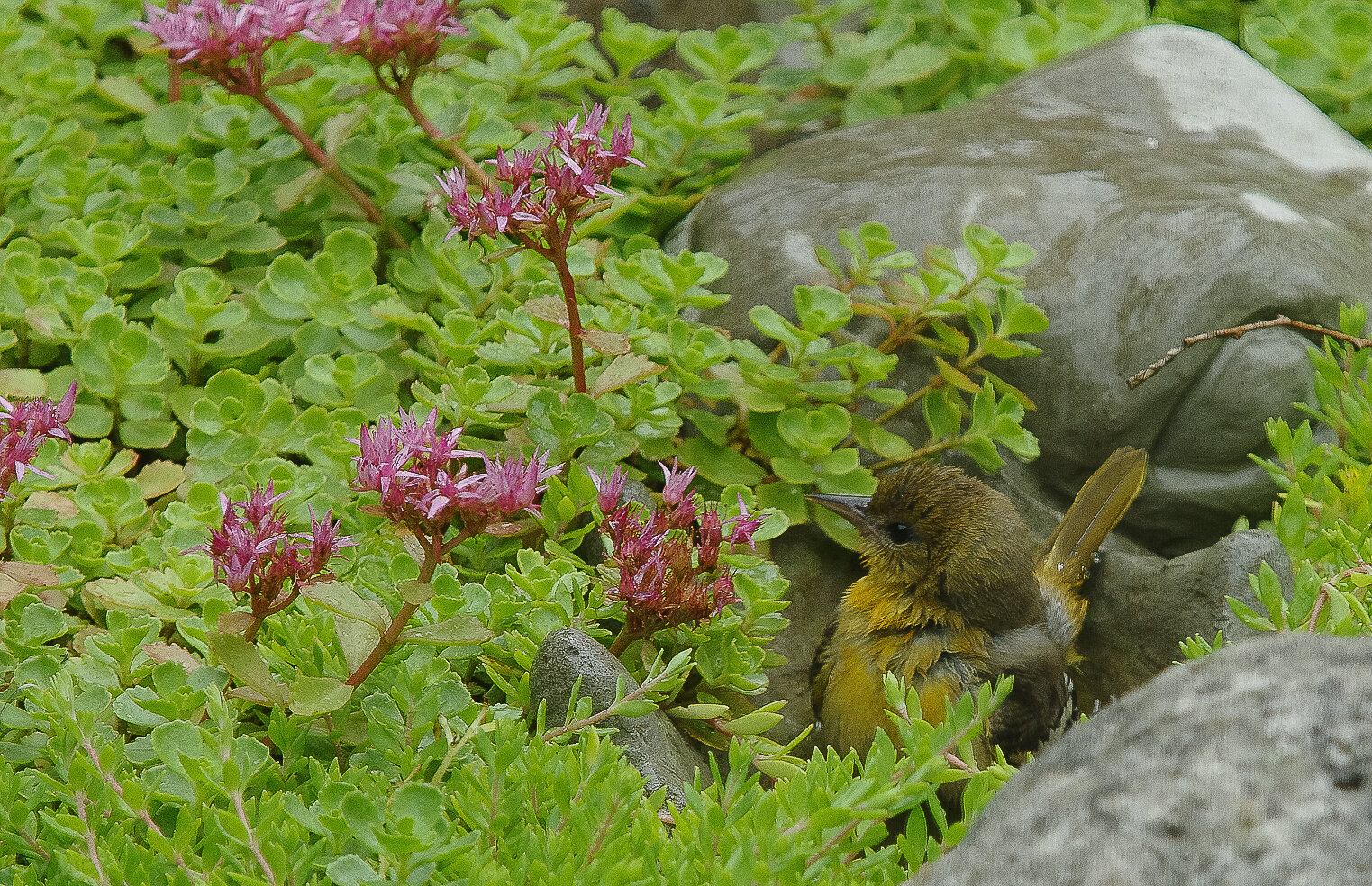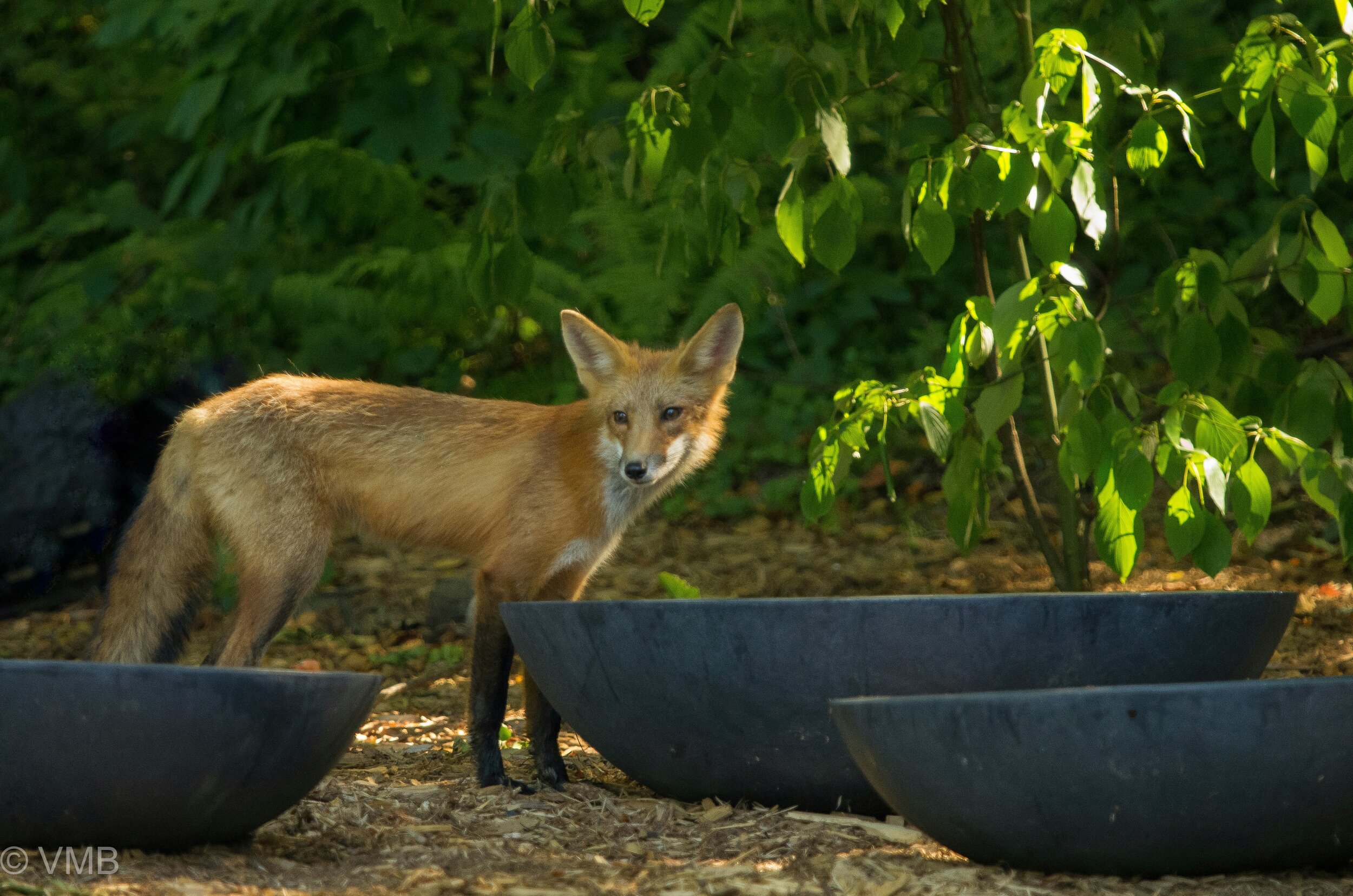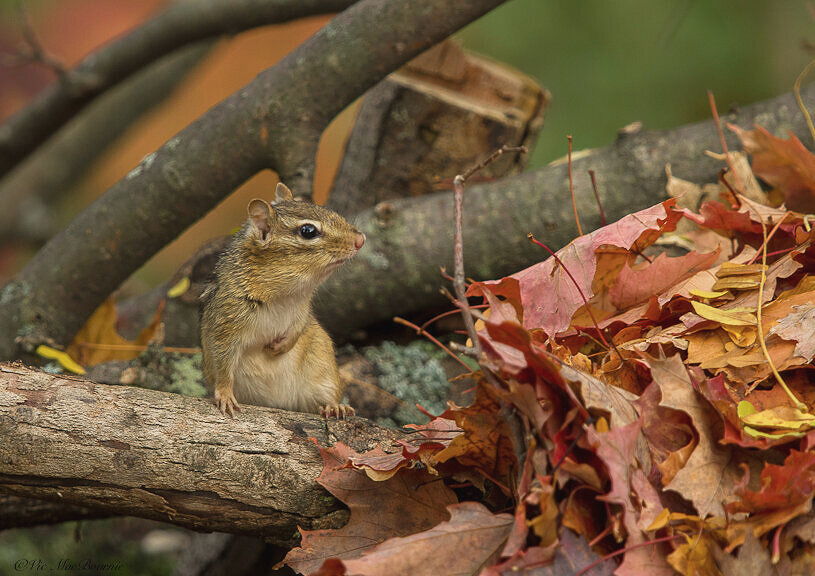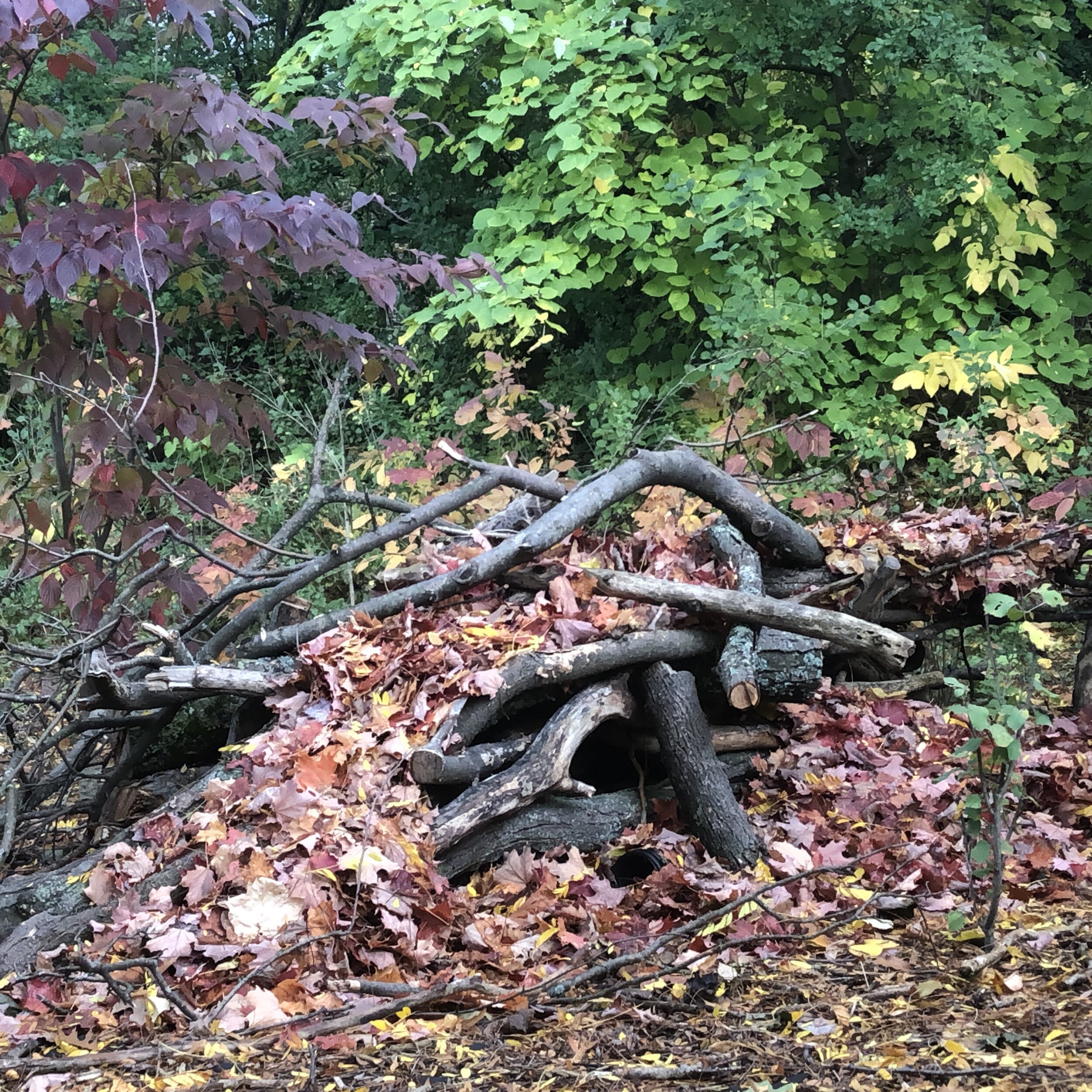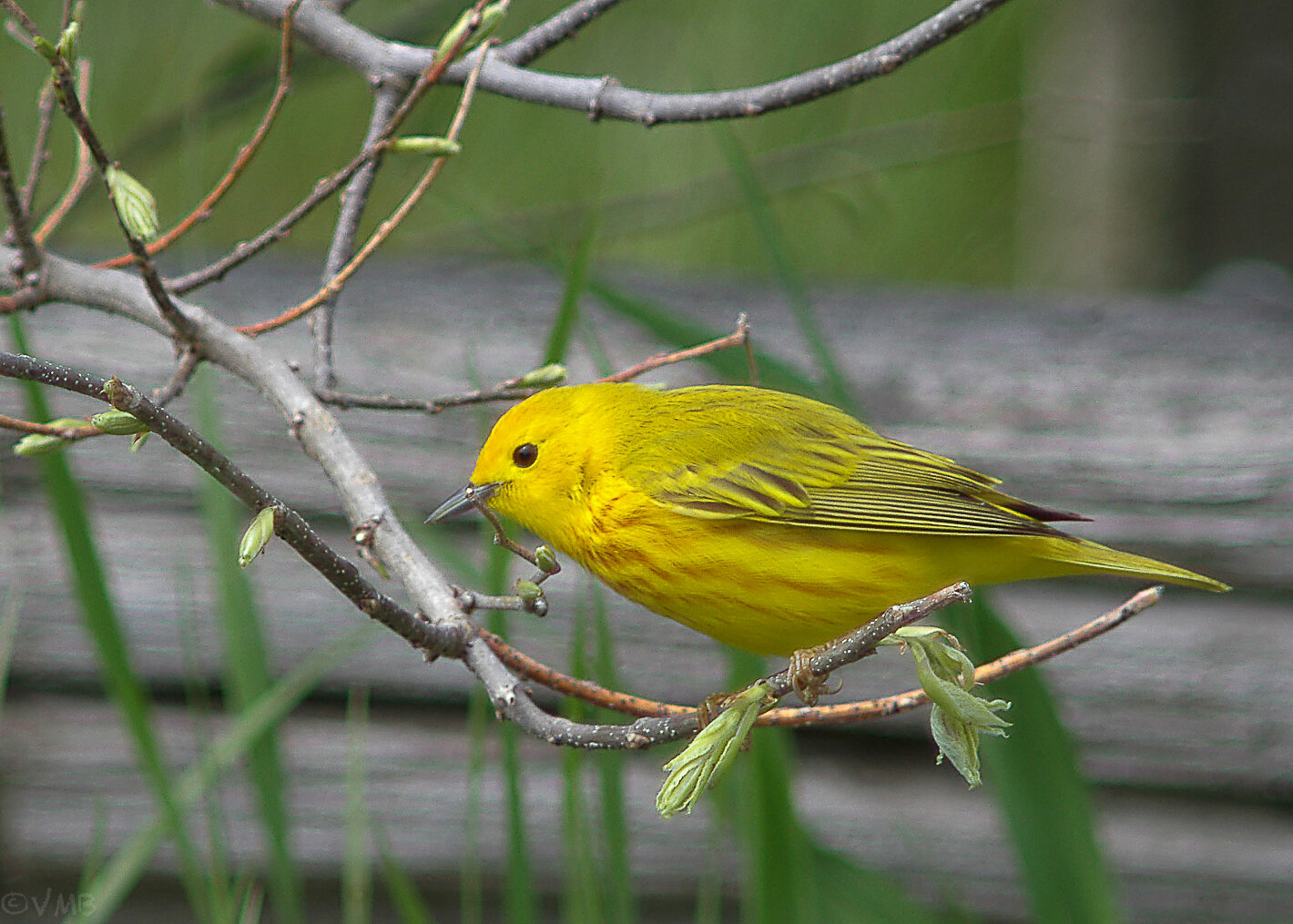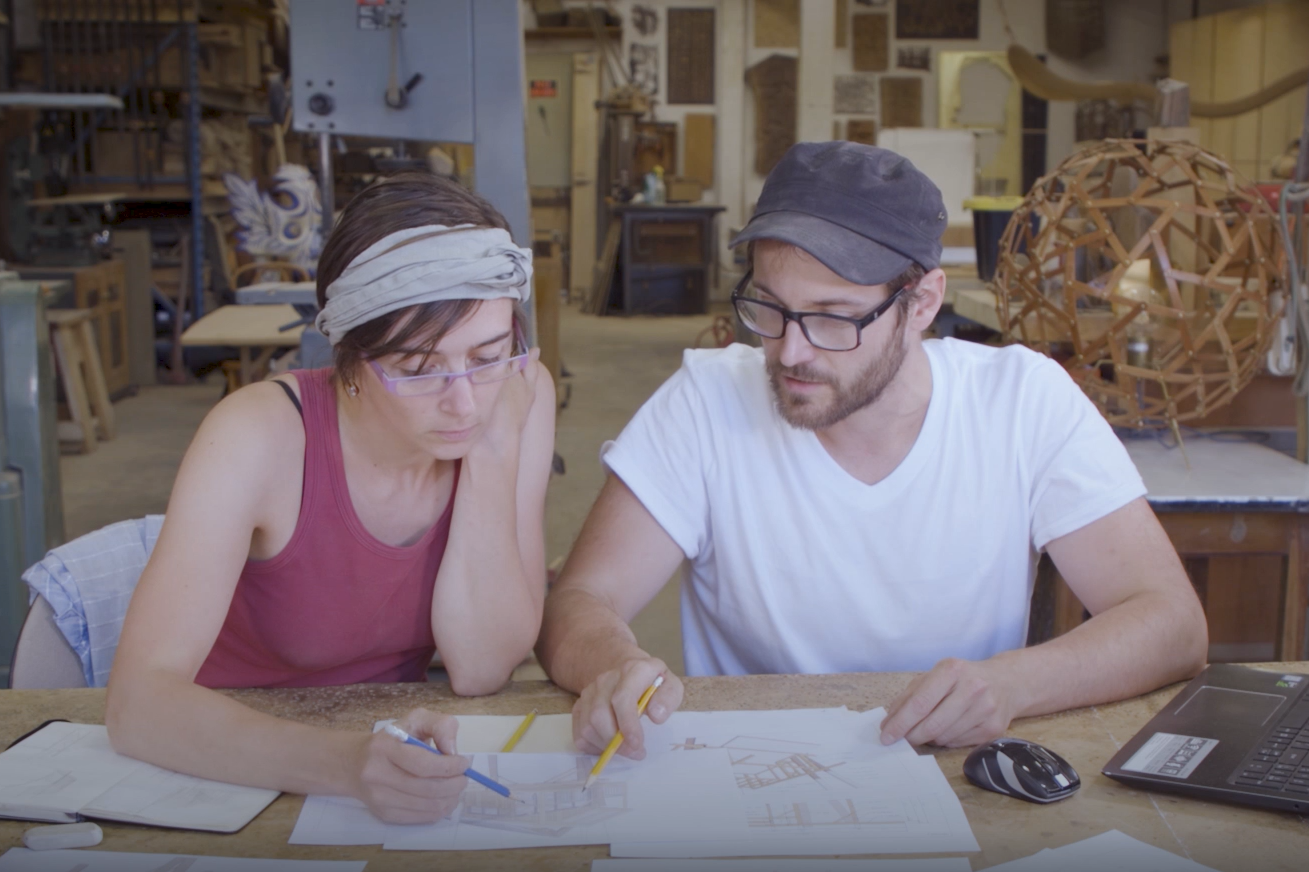How to attract Blue Jays and are they mean birds?
They’re boisterous, bullies that add a hit of colour to our backyards. Blue Jays are one of the most beloved birds in our gardens, but it was not long ago when they were threatened by a deadly virus that wiped out hundreds of thousands of birds.
Blue Jays rebound after severe hit from West Nile
They’re loud, arrogant, boisterous bullies, and some may even consider them mean. But most bird lovers are happy when they see them at the feeders or, better yet, nesting in their backyard.
Not everyone, however.
Like some family members, blue jays arrive, make a lot of noise, steal all your food, hang out for longer than you want them sometimes and then leave without as much as a thank you.
Blue Jays have returned to our backyards after a couple of lean years caused by a multitude of deaths resulting from West Nile disease that hit Blue Jays hard.
And nothing could make me happier.
If you are looking to attract Blue Jays to your yard, take a minute to check out my post on my two favourite Blue Jay feeders.
Back when West Nile emerged in the late 1990s into the 2000s, dead crows and blue jays provided early warning of the outbreak. In the year 2007, research by the journal Nature warned that populations of seven species of birds, including robins, blue jays and crows showed “dramatic decline” across the continent since West Nile emerged in the U.S. in 1999. The research compared 26 years of bird breeding surveys to arrive at the results. The report stated that the disease, primarily an avian virus spread by mosquito bites, killed hundreds of thousands of crows and jays.
The virus targeted seven species – American crow, blue jay, tufted titmouse, American robin, house wren, chickadee and Eastern bluebird. Only the blue jay and house wren were able to bounce back in 2005.
Earlier this summer I had nine – count’em nine – blue jays on my birdfeeder at once. A few more in the trees scattered throughout our woodland and another making itself at home in one of the birdbaths.
Then they spotted an owl way up in a tree and all hell broke loose for about five minutes until the owl flew off into some denser foliage.
One thing I can honestly say is that there is never a dull moment with these guys around.
And people love to see their colourful plumage in their backyards. These intelligent and adaptable birds that grow to about a foot long will feed on pretty much anything in our backyard landscapes, but are certainly very happy helping themselves at our bird feeders.
Are Blue Jays mean birds?
Blue Jays have gained a reputation in many circles for being mean birds, not only around the bird feeders but in their natural surroundings.
This reputation is probably the result of their loud rambunctious vocals as well as the the fact that they can be very territorial during nesting season and even around a bird feeder or bird bath.
At the bird feeder you will often find them visiting as a family group in large numbers. Their sheer size, rambunctious attitude and loud calls often force smaller, more timid birds to move on, leaving the feed for the Blue Jays to feast on all on their own.
Blue Jays’ long, sharp beaks also make them a formidable foe against even larger woodpeckers at our cylinder feeders.
It’s not hard to see how they have earned the reputation for being mean birds.
But most of their aggressive nature is the result of four factors:
Protecting their nest
Protecting a food source which includes a bird feeder
Protecting their fledglings either on the nest or near the nest
Protecting their flock when resting (bathing/feeding)
Yes, blue jays are territorial but they have to be to protect themselves.
Their aggressive approach to any raptor that decides to come into their territory is another example of how “mean” these birds can appear. Blue jays fear raptors but will – together with crows – aggressively harass a hawk or owl that wanders into their area, not backing off until the raptor moves on.
But Blue Jays have earned the reputation of being “mean” birds for more than just their bravado around the feeders and when raptors appear near their nests.
Blue Jays can seem downright mean in our eyes when they aggressively protect their nests and even bird feeders. They’ve even been know to attack humans who get too close to their babies on their nests. You may not realize you have invaded their territory and just think the birds are being extremely aggressive.
Blue Jays can also be very aggressive toward garden snakes, which is another reason they have earned a bad reputation.
Blue Jays are also known to eat other birds’ babies as well as frogs, which probably has not helped their reputations.
Blue jays have full repertoire of calls and sounds
These guys are not limited to their ear piercing raucous calls of jay, Jay, jay. Their repertoire includes a variety of musical sounds and they can apparently do a remarkably realistic imitation of the scream of a Red-shouldered Hawk. They’ve also been known to try to imitate humans on ocassion.
Often times I hear odd sounds and expect to see a rare bird emerge from the tree, only to find that the unusual sounds are from a blue jay. They can certainly communicate in a number of voices.
Blue Jays are among our more colourful and boisterous backyard birds.
What Blue Jays eat
The birds are omnivorous, with vegetables, fruits and berries making up more than 70 per cent of their diet, including beechnuts, acorns, seeds, grain and, of course, a variety of berries and small fruits like service berries and dogwood berries.
They can be seen foraging in trees and shrubs as well as on the ground. Their large, strong beaks allow them to pound open hard nuts and seeds like acorns, which they harvest and store in holes in the ground for later use.
Needless to say they help plant many an oak tree in our forests and our own backyard landscapes.
Being opportunists, as summer progresses, they also like to feast on caterpillars, beetles and grasshoppers, but they’ll also eat snails, spiders other birds’ eggs, small rodents like mice, frogs, baby birds and carrion.
Just a reminder that using native plants and trees in our backyard landscape designs, including oak, dogwood, serviceberries and chokecherries are always a good idea.
Where Blue Jays nest
Both Blue Jay parents take part in feeding the nestlings who spend about 17-21 days in the nest before going out on their own. Blue Jay eggs, between 3-7, are greenish or buff, sometimes pale blue, spotted with hints of brown and gray. Incubation is about 16-18 days.
Look for nests anywhere from about eight feet to as high as 50 feet above the ground, made up of twigs, grass, weeds, bark strips and moss. They can be quite messy often lined with rootlets combined with paper, old rags, string and other debris found in urban areas.
Their range is large, stretching north well into eastern Canada and as far west as Alberta and down south to Florida. Although they are common at our bird feeders year round, many do migrate during the day further south.
They are in the same family as Crows and Magpies and are found throughout eastern oak and pine forests where they breed in deciduous or mixed woods and is often quite common in heavily wooded suburbs or parks.
Climate change is increasing the blue Jays’ range farther north in Canada, but, at the same time, spring heat waves are diminishing their range slightly because of the heat threatening young nestlings in hotter parts of both the U.S. and Canada.
What’s the best Blue Jay feeder?
Here are two bird feeders you will want to check out that are magnets for our noisy blue jays.
Two of the best feeders to attract Blue Jays
Attracting Blue Jays to your yard begins with having the right bird feeders to deliver their favourite food.
In our yard, there are two feeders that do an excellent job attracting our northern blue jays year round.
The best Blue Jay feeders are both simple and inexpensive, and deliver Blue Jays’ their favourite foods in a convenient way that allows them to perch comfortably while feeding. A seed cylinder spike, and a wreath-style whole peanut feeder are two of the best feeders for blue jays.
If you follow this website, you’ll know that my all-round favourite bird feeder is a simple attachment to the Wild Birds Unlimited Advanced Pole system. It involves nothing but a spike that sits on top of the pole and holds a variety of compressed seed cyclinders.
This is a very simple system that works for me and the birds. The one problem I have is that the seed cyclinder is directly open to the elements. This allows the Jays and other birds to have easy access to the sides as well as the top of the seed cyclinders, but it also allows water to eventually get into the seed and begin to break down the “glue” (it’s actually a gelatin that works like glue), leading to the enventual early demise of the seed cyclinder.
There are seed cylinder feeders that include toppers to help protect the cyclinders from being totally exposed to the elements. I think they are certainly worth considering, especially if you live in a particularly rainy or snowy environment.
The spike is simply the delivery system for the seed cyclinders, so it’s paricularly important to provide the Blue Jays with their favourite foods in the cyclinders. Look for compressed seed cylinders high in their favourite foods – black oil sunflower seeds, regular sunflower seeds and unshelled peanuts.
The round peanut feeder above and pictured below is a real favourite of Blue Jays giving them plenty of space to land. Their strong beaks enable them to easily pull the peanuts out from between the springy wire circles holding them.
One of the main reasons the cylinders are so attractive to blue jays and less attractive to some other backyard birds, is the fact that blue jays have very strong beaks that allow them to pound at the cyclinders to get the seeds they want. Our cyclinders are most visited by blue jays and woodpeckers. Other, smaller birds, are left to pick up the pieces of seed that fall off when the jays and woodpeckers attack the cylinders.
If you are interested in more information on attracting Blue Jays to your backyard, check out my post on Blue Jays and West Nile.
The spiked bird feeder that holds the compressed seed cyclinders doesn’t have to go on the top of a pole. Attachments are available to use a spike and seed cyclinder attachment as an accessory on other parts of either the WBU Advanced Pole System or other bird feeding station. Some spike-style accessories can be hung on feeders after inserting the seed cylinder, so there is no excuse for not adding one to your bird feeding station.
Blue jays flock to the Wreath feeder for peanuts
While the seed cyclinder feeders are excellent for attracting blue jays to your yard, I think the wreath feeder filled with shelled peanuts is the best feeder to attract the birds.
The main reason for the success of the wreath feeder is what we will them with – shelled peanuts. I think shelled peanuts are blue jays’ favourite food. And, because the shells are difficult for smaller birds to penetrate, you can count on your blue jays to get most if not all of the peanuts. The wreath feeder can accommodate a number of blue jays at one time and provides them a good perch to remove the whole peanuts from the cyclinder.
Woodpeckers also enjoy whole peanuts in the wreath, but they primarily peck away at the peanuts rather than remove them to eat elsewhere like blue jays do.
The only problem I have with a wreath-style feeder is loading it with peanutes. While it’s not particularly difficult, I find loading them by hand can be a little bit tedious. I’m sure there are better ways to load peanuts into the feeder, but so far I have not discovered it.
The wreath feeders are a particularly effective way of delivering whole peanuts, but there are several other ways to deliver whole peanuts that can also work.
The Urban Nature Store in Canada actually groups their feeders according to what feeders are best for specific birds. Check out their list of best blue jay bird feeders just to get a feel for what feeders are best.
Check out your local bird store for other peanut feeders.
Sumac: First signs of fall in the garden
Staghorn Sumac is an excellent addition to the garden both to add architectural interest and provide a food source for birds and animals.
Important food source for birds and other wildlife
It’s early October and the native Sumac is already lighting up the roadsides and welcoming the first signs of fall in the woodland garden.
Along roadsides and escarpments, where this fast-growing native shrub or small tree (grows to about 30-feet high) gets plenty of sun, Sumac lights up with brilliant oranges, yellows and reds.
It’s often the first plant nature photographers focus on when in search of early colour in the fall landscape, and it’s a perfect addition to the woodland garden. Sumac has compound, serrated leaves that are a bright green in summer before taking on its fall cloak.
How did Sumac get its name?
There is no missing the velvety bark on the branches that cover Staghorn Sumac. This velvet resembles the velvet that covers the antlers of male deer (stags) throughout the summer, earning Sumac the name “Staghorn”.
There are more than 30 varieties of Sumac in North America with more native varieties in Europe, Africa and Asia.
Is Sumac a food source for birds and other wildlife?
Not only is Staghorn Sumac (Rhus typhina) an incredibly colourful addition to the woodland, its fall berries, that grow in large clusters atop the shrub’s branches, are also a very important source of high-value food for birds especially migrating birds.
Staghorn Sumac puts out small greenish-yellow flowers that attract pollinators. They grow in the shape of a cone in spring and become the reddish-haired fruit clusters as summer turns to fall.
These hearty fruit clusters, that often remain on the plant well into winter, are vital resources for hundreds of bird species including our backyard favourites like Cardinals, Gray Catbird and a host of woodpeckers ranging from the impressive Pileated to the small Downy and larger Hairy woodpeckers. Add to that list the American Robin together with other thrush species. In a more wooded natural area, don’t be surprised if it attracts Ruffed Grouse and wild Turkeys.
As an added bonus these plants are deer resistant.
Staghorn sumac is dioecious, meaning that it has individually male and female plants.
These shrubs/small trees are extremely hardy, and are both drought and salt tolerant. They prefer a sunny location and dry to moist soil and will not tolerate shade or wet soil. Use these fast growers as an erosion control plant if you have problematic areas.
Where I live, The Niagara Escarpment is the dominant geological feature that cuts through the landscape. The Staghorn Sumac lights up the many cuts through the escarpment and turns the roadsides into sparkling jewels at certain times of day.
Staghorn Sumac is native to the more southern half of Ontario, and eastward to the Maritimes.
Sumac species include both evergreen and deciduous types. They generally spread by suckering, which allows them to quickly form small thickets, but can also make the plants overly aggressive in some circumstances.
There are usually several varieties available at nurseries, but this attractive native is probably all you will need.
Other forms of Sumac
At one of my local nurseries there are three Sumacs listed including the Staghorn Sumac. The others are Fragrant Sumac, and a dwarf variety of fragrant sumac called fragrant gro low Sumac as well as Cutleaf Smooth Sumac.
Cutleaf Smooth Sumac (Rhus glabra Laciniata) is a smaller hardy shrub (hardiness zone: 2B) with finely cut tropical-looking leaves that add texture to the garden. Grown primarily for its ornamental fruit, and its open multi-stemmed upright spreading habit. It lends an extremely fine and delicate texture to the landscape and can be used as a effective accent feature. Click on the link for more information on the Cutleaf Smooth Sumac.
Gro Low Sumac is described as low growing and compact shrub with interesting foliage turning brilliant colors in fall and bright yellow flowers in spring. Makes an excellent ground cover as it tends to sucker, filling in areas quickly. Does well in shade. Click on the link for images and more information on the Gro Low Sumac.
Fragrant Sumac is described as a rugged and durable medium-sized shrub with interesting foliage turning brilliant colors in fall and bright yellow flowers in spring. Tends to sucker, forming a dense spreading mass, attractive for a garden background or for naturalizing, good in shade.
What’s the best bird bath?
The best bird bath is the one that backyard birds use the most. But not all bird baths are created equal. The best approach is to have a selection of different bird baths that provide a variety of water sources for birds.
Goldfinches are attracted to the moving water from this DIY fountain.
What bird baths do birds use the most?
The best bird bath for your garden is the one the birds use the most.
It doesn’t have to be pretty, colourful, made of marble or have a three-tiered fountain.
In fact, it can be downright ugly. If the birds like it, then it’s the best for your woodland wildlife garden.
The question that really should be asked is: What bird bath do birds use the most?
The answer to that question is more complicated because birds, like we humans, are all different.
Having several very different bird baths at various levels will attract the largest number of birds to your backyard. This will not only attract a greater variety of birds, it will also limit territorial confrontations and ensure there is always a reliable water source in your garden. But, if I could have only one bird bath, it would be a very large concrete one raised a few feet off the ground, that has a rough surface for the birds to walk on, starts off quite shallow (a half inch) and gradually slopes toward the middle to about two to three inches deep.
I don’t own that bird bath. Instead, I offer the birds a multitude of above ground, hanging, and on-ground water sources of varying sizes where they can drink or bathe to their hearts’ content.
Provide birds with a choice of bird baths
In our front and back gardens, for example, there are usually between 10-12 bird baths on the go at any time during the spring, summer and fall. Most were purchased over the years either new from a store, purchased used from on-line marketplaces or home-made by yours truly.
A copper bird bath is always a good choice both for its aesthetics as well as its antimicrobial benefits.
All of them are very different and appeal to an ever changing variety of birds.
Some include running water. Others are very natural with rocks, pea gravel and moss. Most are concrete, but some are copper, fibreglass, plastic and ceramic. One is only for drinking water.
Do you need that many bird baths?
Absolutely not. But if you hope to attract a variety of birds, a few different bird baths placed strategically in your yard will be a major factor in meeting their varying needs.
If I could have only one bird bath, it would be a very large concrete one raised a few feet off the ground, that has a rough surface for the birds to walk on, starts quite shallow (1-inch) and gradually slopes toward the middle to about two to three inches deep.
Best bird baths for particular bird species
A look at the various bird baths in my garden and how the birds use them is a good way to establish the general hierarchy of backyard bird baths.
By examining how the birds use the various bird baths in my yard, readers can get valuable information about what type of bird baths might be best for their yards.
A favourite for our backyard birds
One of my favourite bird baths is a three-year-old concrete model that sits in a corner of the yard beneath a flowering dogwood and attracts probably the greatest number and variety of birds in our garden. I think its attractiveness to birds is as much about its location in the garden as it is about its construction, but more on locating a bird bath later in the article.
This bird bath has a rough surface to give birds confidence they will not slip. It has a 60-inch circumference and fairly steep sides leading to about a 2.5-inch-deep centre.
It’s not built for smaller birds who shy away from jumping into the depths of the bird bath.
The lip on the bird bath is wide and rough enough that smaller birds will not hesitate to land on it for a drink, but unless the water is quite low in the bird bath (often by the end of the day if used regularly that day) the smaller birds such as chickadees, goldfinches, nuthatches and small sparrows choose other bird baths in the garden.
This bird bath is particularly attractive to larger backyard birds including cardinals, Blue Jays, woodpeckers, thrushes and grackles that visit the bird bath daily both for drinking and bathing.
It’s also short enough that squirrels and chipmunks can jump up to it to get a quick drink if necessary.
Don’t be afraid to move bird baths to a new location
The location of this bird bath is also ideal. It’s in a 1/2 shade location that gets late afternoon and evening sun. It sits nicely right below a flowering dogwood that provides plenty of perching areas for the birds to work their way down to the water when they feel it is safe. There are no hiding places around it that would allow predators to stalk it easily and it’s also in a far corner of the yard that does not get a lot of human traffic.
It may not be possible to place your bird bath(s) in ideal conditions, but don’t hesitate to move bird baths around the yard to look for a spot where the birds feel especially comfortable using it.
Copper bird bath has antibacterial qualities
In another corner of the yard, close to the home, is a large copper bird bath purchased from a couple on Kijiji. The elegant copper bird bath proved too good to turn down despite a hefty price tag for a used bird bath and the hour-long drive to pick it up.
This is by far the largest of the traditional bird baths in our garden, with a 70-inch circumference and a middle depth of just over 2 inches.
It’s a popular choice for birds both big and small as well as a number of chipmunks and red squirrels who visit it regularly throughout the day.
Its close proximity to a garden seat and container planter gives the chipmunks and squirrels easy access to the bird bath that I can clearly see from the comfort of our family room.
The antibacterial qualities of copper is just an added bonus to its large water reservoir, gradual slope to the middle and it’s two-inch central depth. Its small rounded lip makes it easy for small birds to grasp for a quick drink and its depth is a favourite for our cardinals to use as their nightly bathing spot.
The copper bird bath’s biggest downfall is the fact that it, like any metal bird bath, can quickly overheat the water if left out in the sun for any given time. Even in the shade, the water can heat up on particularly hot days.
Our copper bird bath is in a shady area of the garden, but more importantly, it is very close to the hose and gets a cold-water top up on most days, especially on particularly hot ones.
Any metallic bird bath should be placed in a shady spot where it gets as little sun as possible to prevent the water from overheating.
A perfect solution is to purchase a copper hanging birdbath that you can tuck in a shady spot under a large tree, preferably near your favourite sitting area. This copper bird bath (see below) from Gardener’s Supply might be the perfect addition to your garden.
If your favourite place to watch the birds is on your deck, the deck mounted bird bath, also from Gardener’s Supply should do the trick.
This copper bird bath from Gardener’s Supply is ideal for hanging in a tree near your favouring sitting place.
Benefits of a copper bird bath
Copper’s malleability has made it a popular building material dating back close to 10,000 years where it has been used to make tools, eating utensils and other important household objects.
If a deck is your favourite hangout spot to watch birds, a copper birdbath that attaches directly to the deck makes not only enjoying the birds easy, but filling and cleaning the bird bath is simple too.
Today, whether in its pure state or combined with other metals to create alloys such as brass or bronze, it is primarily used to create decorative indoor and outdoor objects that age gracefully, especially in the garden where it takes on a beautiful patina over time.
Often overlooked is copper’s anti-algae and anti-bacteria qualities that make it the perfect choice for bird baths and bird feeders. Easy to clean, with its own limited self-sterilizing qualities, copper bird baths should get high marks when considering the purchase of a new bird bath. Their longevity, antibacterial qualities and natural good looks as they age in the garden makes them a fine investment if you are looking for both a piece of art and highly functional bird bath for your garden.
Although a copper bird bath seems like a perfect addition to any garden, besides the high purchase cost, they also tend to be quite light in comparison to a concrete or resin bird bath and as a result are easily damaged if they are knocked over onto a hard surface. When placing your bird bath, try to keep it away from a concrete pathway or patio where it would likely be damaged if it fell over or was knocked over.
If purchasing an expensive copper birdbath does not interest you, you can take advantage of the antibacterial qualities of copper by simply stripping copper wiring of its plastic sheathing, wrapping it around an object and placing it in the birdbath. Try tucking it under a couple of rocks to keep it hidden and stop any curious mammals or crows from carrying it off.
A rock placed in the bird bath gives smaller birds a safe and familiar landing place to drink from.
Add a solar fountain
I recently picked up two smaller copper-look bird baths on line that work well near our patio. I suspect they might have been for sale at a good price because the previous owners didn’t have much luck attracting birds with them.
At first glance they looked awfully deep and their steep, metal sides likely scared away any birds.
Perfect, I thought when I picked them up. A few modifications later, and our two very attractive bird baths would work well for both aesthetics and, more importantly, our backyard birds.
To solve the problem, a large rock was simply placed in the middle of the bird bath. The rock is large enough to protrude out of the water enough to give smaller birds a comfortable and safe landing spot to stop for a quick drink or dip into the bird bath.
The other bird bath was a perfect candidate for my DIY Solar drip turned fountain. Because the centre was so deep, I was able to bury the solar pump under the flat stone that is part of the drip. The combination works perfectly with the moving water attracting birds and the flat rocks giving them safe access to the water.
If you are looking to add a solar pump to a bird bath, it’s best to get a deeper one so the pump is in deep water even if the birds splash a fair amount of water out of the bird bath.
When birds think square is cool
Our square bird bath in the Japanese-inspired garden.
Let’s face it, everyone wants nice things in their garden.
If it can double as a piece of art, it’s even more valuable. That’s how I feel about our square, super heavy bird bath that graces our front Japanese-style garden.
It fits perfectly into the Japanese garden aesthetic with its simple straight lines, heavy square pedestal stand and equally heavy square top. The entire bird bath is painted white with an acrylic paint that gives it a sophisticated look rather than the rustic one often associated with traditional cement bird baths.
I love its looks, but more importantly, so do the birds – especially the Goldfinches that visit it daily on multiple occasions. But they are not alone, our neighbourhood Robins also have a soft spot for this bird bath as well.
Very different birds – one very large and aggressive while taking a bath, the other quite small and shy – attracted to the same bird bath.
What’s the story here?
It turns out that this bird bath has a huge square rim (3-inches wide) surrounding the round and rather deep centre pool (1.5- to 2.5-inches deep) that has a natural shallower spot in the middle. The robins hop right in and fully enjoy themselves in the deeper water, while the Goldfinches stay on the large brim and easily sip at the water’s edge. Small, decorative indentations (leaf motif) are often filled with water and allow the Goldfinches to sip from them in complete safety.
Other birds, especially Cardinals, also visit the Japanese-style bird bath that sits nicely in the shade under the perching branches of a mature Japanese Maple.
Nearby, is a massive boulder with a small natural pool in it that fills with water after a heavy rain. On my daily watering rounds, I always fill the small natural pool after filling the bird bath. The small pool is a favourite for small birds but it’s so small and shallow that it is not a reliable source of water. The nearby bird bath creates that all important reliable source of water for the birds.
Tiny concrete bird bath is a small-bird favourite
Since we are still in the front garden, let’s talk about the tiny concrete bird bath that has become a real favourite for small birds, and chipmunks winter, summer, spring and fall.
It’s been in the same spot for probably eight years, is a mere 1.5 inches-deep when it is brimming full (almost never) and measures only 22 inches in circumference. But the Goldfinches, Chipping sparrows, chickadees and chipmunks gravitate to it daily. In fact, keeping it full of water is almost a full-time job during the heat of the summer.
Why do birds like this bird bath so much?
The key to the success of the tiny bird bath is the fact that small birds feel extremely safe using it. It’s only about 14 inches off the ground, has a rough surface and is shallow enough that they can jump right in and get down and dirty (or should I say clean).
It’s surrounded by naturalistic gardens and sits in the shade of the canopy of three mature trees: A very large Crimson Maple, a good-sized Japanese Maple and a large single-trunk Serviceberry.
With good vision all around, little threat from above, and an abundance of quick escape hatches this bird bath has become a safe, quiet place that creates a comfort level that these small birds like to take advantage of whenever possible.
Two large, moss-covered limestone boulders provide both the birds and the chipmunks with a perfect place to preen after their baths. It’s not uncommon to see them taking turns flitting from the bird bath to the rocks and back again. Our front garden is also a quiet place, away from a lot of human activity making the bird bath even more desirable for shy birds.
On-ground water sources are a favourite
Ever seen a flock of birds having the time of their life in a puddle after a storm? It’s often a dirty puddle by the side of the road with a massive lake right next to it and they choose the puddle. Why?
It’s all about safety and easy access for these smaller birds.
And that’s the beauty of small, shallow on-ground water features sprinkled throughout the garden.
These water sources could be simple – an old lidless piece of tupperware – or more involved like concrete formed into a leaf pattern. Either way, the birds, mammals, amphibians and reptiles will thank you for providing much needed water at ground level where they have easy access to it.
Add a bubbling rock
A small, solar-powered bubbling rock is one of the most heavily used water sources in our woodland garden, but it’s not what you may think.
When I first installed the bubbling rock, I imagined birds flocking to the bubbling end sipping and splashing about and just having the time of their lives.
That didn’t really happen. Sure, on occasion a bird will perch on the rock and sip or frolic about in the bubbling end of the rock, but it’s more likely that the birds, chipmunks and squirrels drink from the water reservoir at the bottom of the bubbling rock.
It’s common knowledge that birds are attracted to moving water whether it’s a simple drip or the steady flow from a bubbling rock, but like anything, the reliability of that water is of prime importance. I believe that because the solar fountain is only on during sunny periods, the bubbling water is less reliable than the water in the reservoir and the birds and animals have gotten used to going to the reliable source.
Keep that in mind the next time you let your bird baths go dry for an extended period of time.
Nevertheless, between the reservoir and the bubbler, it’s a popular spot in our garden.
Concrete leaf and a moose’s ears prove popular
We fell in love with it the minute we saw it, paid too much for it, but have enjoyed it for years. A large rhubarb leaf molded into a concrete on-ground bird bath that needs to be filled daily and holds a tiny amount of water.
But I don’t know what the chipping sparrows would do these days without it. They are the leaf’s biggest fans in the bird world.
In the mammal world, the leaf has become a hangout for one of our friendly chipmunk families that decided the water-filled leaf made for the perfect backyard swimming pool going so far as to dig through and around large river rock and pea gravel to locate their back door right next to the leaf.
Living their best life among the soft sedum and rocky outcrop surrounding their backyard pool I guess.
In another area of the garden is Bruce (Springsteen) the moose with large ears that are actually quite deep water reservoirs. My fondest memory of Bruce the moose, was the time a mother Oriole brought her entire brood to bathe in Bruce’s oversized ears.
It was quite the sight.
The two ears act as water reservoirs. The ears are not big. In fact, the young Orioles had to take turns jumping into the ears, but once they got in they found the water quite deep (about 3 inches). No worries though. The tight confines ensured the little birds were not going to slip or fall over. Maybe that’s why mom brought them in to see Bruce.
Anyway, everyone had a great time playing in Bruce’s ears for about 10 minutes before flying off.
Hanging bird bath at home in a tree
If you are like me and like to watch the birds up close during your morning coffee, a hanging bird bath is the best option. Ours sits in a large yellow magnolia that actually overhangs our patio. In the mornings, the boisterous Carolina wrens and Chickadees use it for a quick morning bath or drink and I get to watch them between sips of coffee.
Our hanging bird bath is from Lee Valley and sports a very shallow (1-inch in the deepest part) ceramic bowl with a terra cotta edge to provide grip for the small birds. It needs regular filling, so placing it in a shady, easily accessible spot allows you to keep your eye on its water levels throughout the day.
Because it is so shallow, by placing a layer of pea gravel in it, butterflies, dragonflies and other insects may also become regular visitors.
In conclusion (not all bird baths are created equal)
Bird baths are no different than most things in life – a single solution is rarely the best.
Success will be more likely if you incorporate a few different bird baths to attract different types of birds. Large deep ones for big birds like Jays, Cardinals, Grackles, Orioles even the neighbourhood crows. Smaller, shallow birdbaths for Chickadees, goldfinches, nuthatches, sparrows, house and purple finches. On-ground bird baths for shy birds that prefer to bathe at ground level.
I have yet to mention our three massive garden water bowls that sit on the ground between 8-12 inches high. On more than a few occasions, I have seen a large hawk use one of the bowls as a bird bath.
Generally speaking the bigger and deeper the bird bath, the bigger the birds will be who use them.
A solar fountain is an excellent addition to any bird bath. Use one with a gentle spray nozzle to provide hummingbirds with an opportunity to cool off by flying through the spray.
Remember that bird baths don’t have to be expensive.
Birds aren’t looking for pretty. They are way to busy surviving.
Give them a helping hand and you’ll be rewarded ten times over.
Providing birds with water is vitally important, but don’t forget to provide food as well.
While I get great enjoyment from my bird feeding stations, providing natural food sources to our feathered friends is always the goal we should aspire to in our gardens. I have written a comprehensive post on feeding birds naturally. You can read about it here.
As an affiliate marketer with Amazon or other marketing companies, I earn money from qualifying purchases.
Expert Tips for Attracting Birds to Your Backyard Fast
Attracting birds to your backyard involves providing them with a number of key elements including food, water and shelter. This guest post that Ferns & Feather participated in touches on all these elements.
This is a guest article that Ferns & Feathers participated in and that was originally composited by Mike Cahill for Redfin blog in Seattle, Washington. To check out the original post, go here.
When trying to attract birds to your home creating a habitat that serves their basic needs is essential. Food, water, and shelter are key but aren’t the only variables you need to consider. While these satisfy their physiological needs, birds also prefer a safe space where they can socialize freely. That’s why we reached out to the birdwatching experts from Vancouver to New York to provide you with a few creative ways to attract birds to your home.
Foster a bird haven
The most effective way to attract many different species of birds to your yard is to offer a wide variety of food sources including seeds (especially black oil sunflower seeds), suet, nuts, jelly, sugar water (for hummingbirds) and fruits. Also consider installing native plants, fruit-bearing trees, and shrubs in varying degrees of density in your backyard to promote an attractive, safe habitat for the birds to forage, roost and nest in. It’s also a good idea to put out a birdbath or install a small pond garden so that the birds have someplace to bathe, cool off and grab a drink, something that is particularly important during the summer months. Lastly, make sure that you clean your feeders and birdbath periodically and keep your feeders full. Following these steps, it won’t be long before your backyard will become a bird lover's paradise! - Birdwatching N.C.
It’s important to provide multiple clean water for local birds.
This spring, consider turning your backyard space into a welcoming haven for birds! The key to attracting birds to your yard is by providing for their basic needs. Growing native plants is a great way to encourage birds to settle in your yard by offering natural food sources and shelter. In addition, you can add bird feeders with a variety of food types to entice many different species. Proving a water source is another great way to attract birds because of course, they all need water! Putting a birdbath in your backyard is an easy way to provide a place that birds can drink and bathe. A couple of other important things you can do to help out our feathered friends are to avoid using pesticides and herbicides, which are harmful to birds and also to keep cats out of your yard! Have fun birding and good luck! - Meewasin
Incorporate a variety of feeders
Get some hummingbird feeders up in various parts of your garden. Hummers can be territorial so we suggest at least 2 or 3 different feeders in different corners. Keep the feeders well stocked with a 4 to 1 dissolved mix of water to sugar. Once the birds know there is a regular supply of food they'll keep coming back. Take care to clean the feeders every day or so, and replace sugar water which ferments quickly on hot days. It's not just about feeders - get some plants on the go too. Hummers love brightly colored tubular hanging flowers rich in nectar. Reds and purples are perfect, like cardinal flowers, columbines and fuchsias. - Home Happy Gringo
While I get great enjoyment from my bird feeding stations, providing natural food sources to our feathered friends is always the goal we should aspire to in our gardens. I have written a comprehensive post on feeding birds naturally. You can read about it here.
Don’t underestimate the importance of a clean water source
Our Friends know that their own yards can serve as vital mini-sanctuaries whether you live in the rural vast expanse or eastern Oregon or an urban 'jungle'. We have a few tricks for ensuring that you are supporting the birds that may find themselves in your backyard. First things first - food is not enough. Clean, freshwater is a vital and often overlooked necessity for many birds. A resident of Burns, OR and Friends of Malheur Board Member, Rick Vetter, says, "I use a combination of water, feed, and bait to attract a variety of birds to my backyard in winter." Water can be a shallow bath or bubbler and should be cleaned regularly. Rick continues, Feed consists of 2,000 lb of cracked corn and black sunflower see in several feeders supplemented with suet and a large plastic container of skippy super crunchy peanut butter with holes for wood pegs and slots for access to the peanut butter." What about the bait you ask? Well, Rick has a unique approach to that as well. " Bait consists of California quail and Eurasian collared doves eating the feed and in turn, they attract northern goshawks, Cooper’s hawks, sharp-shinned hawks, red-tailed hawks and northern harriers that feed on them. Merlins feed on the smaller birds. - Malheur National Wildlife Refuge
Try planting local natives
Firstly, I recommend planting local native plants like the Firebush (Hamelia patens). This plant is very attractive to hummingbirds and insects, therefore attracting other birds like warblers and flycatchers. Something important to keep in mind is that this plant has a tropical and subtropical distribution. Therefore it attracts birds suited for those conditions that the plant is also well adapted for. For that reason, before planting your garden or designing your landscaping, you have to investigate the local native plants in your area. Also, another helpful and easy way to attract birds in the garden, for example, is if you have old tree trunks on your property. These dead plants can provide a suitable habitat for woodpeckers, owls and in general birds that need a cavity to nest inside. - Drake Bay Birdwatching
Planning your outdoor space with bird-friendly plants that flower at different times of the year will attract a variety of birds throughout the flowering season. By planting early bloomers you will be providing a food source for early summer migrants (or straggling fall migrants) and by planting late bloomers you will be attracting birds leaving a little later (or fall migrants arriving early). And of course, you’ll be providing for your resident birds as well! To learn how to spot some of California’s most notable birds, check out our Guide to Birding. - Santa Clara Valley Open Space Authority
The most effective way to encourage a variety of birds to your yard is to plant as many native trees, shrubs and flowers as possible. These are plants that the native birds have come to know and depend on over centuries. By using more native plants in your backyard, especially those that flower profusely in spring and follow the blooms with berries, you will not only encourage birds and other fauna to visit your yard, you will also encourage them to stay in your yard and call it home. - Ferns & Feathers
Install a moving water feature
A simple, cheap, clean and effective way to attract birds to your garden is to install a moving water feature. Place a floating solar-powered water pump in the middle of your birdbath, surrounded by small rocks to keep it in place and to act as perches. Alternatively, if you want to DIY it, you can make your own "spring" out of a large plastic bucket with a lid (eg paint bucket) and a small solar-powered pump. Paint or decorate it to your taste, punch holes in the lid for the tubing and drainage back into the bucket, and place small rocks or stones on the lid to give it a more natural feel. The moving water ensures that it is oxygenated and stays clean for longer than still water, and it attracts the bird's eye more readily. - Birding in Spain
Originally published on Redfin
Seven Viburnums: Top shrubs to attract birds to your garden
Building up the number of viburnums in your garden design is a great way to not only beautify your backyard but create a garden that is attractive to a wide variety of birds. Viburnums provide an abundance of flowers in spring, attract pollinators, insects and caterpillars throughout the summer, outstanding leaf colour in fall and an abundance of berries in fall lasting well into the winter.
High bush Cranberry is both beautiful and attracts birds
There is no question that shrubs in the Viburnum family are ideal choices for bird and wildlife lovers. But it’s important to note that they’re not just for the birds.
Gardeners will appreciate our native Viburnums as much in the spring garden with their impressive display of white flowers that attract an array of pollinators, as they will in the fall when their berries are in full bloom.
The one thing you should remember, however, is that you can’t have a bird garden without Nannyberry, Witherod, Hobblebush or High bush Cranberry.
In fact, woodland gardeners looking to attract an array of colourful birds to their backyards should consider the Viburnums as the stalwarts of their shrub borders.
While I get great enjoyment from my bird feeding stations, providing natural food sources to our feathered friends is always the goal we should aspire to in our gardens. I have written a comprehensive post on feeding birds naturally. You can read about it here.
The large family of shrubs provides birds with most of what they need, from nesting and shelter areas, to insects and a plethora of berries.
A Hermit Thrush eyes the fruits of the High bush Cranberry in the wooodland garden.
In zone 5, gardeners can expect fruit to be on display from as early as June through to January and beyond.
Your local high-end garden centre should carry a good selection of viburnums (see link at bottom of post) to choose from, just make sure that they are not hybrids that no longer provide resources for our backyard wildlife.
During the spring and summer, Viburnums are host to a selection of leopidoptera (butterflies and moths) at the caterpillar phases including species such as the Holly Blue Butterfly (Celastrina argiolus), the Hummingbird Clearwing moth (often mistaken for a hummingbird) and the silk and sphinx moths.
The caterpillars are an extra bonus providing important early food sources for birds feeding their young at the nest.
The flowers of the viburnum eventually give way to abundant array of colourful fruits that our backyard birds depend on to get them through the fall and winter.
For woodland gardeners, the range of colours the leaves of our native Viburnums turn as winter approaches is a pure visual treat.
A woodland of deciduous trees will provide the best shelter for them and early spring is the best time to plant them, just when the ground is thawing and the large buds have not yet opened. Plant them in time to enjoy the large flowers before they emerge in spring.
Although there are more than one hundred kinds of Viburnum throughout the world, in North America the major plants are the Hobblebush (one of the first fruit-bearing shrubs to bloom, with berries available all summer long in the woodland understorey.) The somewhat similar Nannyberry and Witherod, are often found in the wild growing in open ground, both with blue-back fruit that is eaten during the October migrations; and the High bush Cranberry, which keeps its fruit until the following spring.
Viburnum with berries in it’s vivid fall colours.
What birds do Viburnums attract?
Viburnums are known to attract Bluebirds, Cardinals, Robins, Cedar Waxwings, Purple finches, Waxwings, Thrushes and Evening grosbeaks and Grouse. The shrubs are found through the northeast United States as far south as subtropical soils, and westward until the mountains block further progress.
The inland North American continent favours a variety of Viburnum shrubs, the best known being the American High bush Cranberry (Viburnum trilobum ) The high bush cranberry is native to every province in Canada in wet areas such as in thickets along shorelines, swamps and forest edges. In the United States, it is found from Pennsylvania to Wyoming.
The plant resists disease and severe pruning, and transplants well. Caring for it is relatively easy. They are susceptible to the larvae of the viburnum leaf beetle, which feed on its leaves. These European beetles can slow the growth of the bushes and even kill them if left unchecked. Clipping off affected branches and disposing of them usually solves the problem.
The plant’s soft green foliage changes to a warm brick red with the first fall frosts. Because the fruit stays on the branch much later than that of other shrubs it adds a bright red highlight to what is otherwise often a rather stark view of our woodland gardens.
The berries soon become a very important source of food for either our winter birds and late migrants, or the early spring migrants looking for critical sustenance at a key time. Don’t be surprised to see Pine Grosbeaks feasting among its branches.
In spring, when not a berry is left on the other fruit-bearing shrubs and vines, the translucent fruit of the high bush Cranberry continues to hang on in clusters, much to the satisfaction of the cedar waxwings and the local bluebirds.
The previous year’s berries can still be on the shrub when the new leaves emerge in spring. That’s when the cedar waxwings will move in and devour the remaining berries.
I’d like to thank Justin Lewis for this outstanding poster on Viburnums. Best viewed on tablet or desktop.
Viburnum lantanoides (Hobblebush)
This is one of the first shrubs to bloom in the spring, along with serviceberry, the Canada Plum and the Scarlet Elder. It’s been described as a scraggly, sprawling bush that favours moist deciduous forests up to about 3,000 feet in elevation.
Its fruits mature in the fall and fall of the branch if the birds have not already eaten them.
It sports large, round, slightly pointed heart-shaped leaves and shines in early spring when its spectacular blossom clusters cover the plant in mid-to-late May just when trilliums, trout lillies and mayflower cover the woodland floor.
Hobblebush does not grow abundantly, and reproduces to form small thickets by sending out runners.
Did you know: Folklore says Hobblebush earned its name from the fact it has long been a curse to anyone trying to bushwack through the woods. The shrubs tough, sprawling branches “hobble” the hiker. The shrub also goes by the popular name of Triptoe for much the same reasons. Hunters refer to the plant as “moosebush” because in winter the leathery brown buds apparently look like moose ears.)
Spring is when this shrub puts on its best show. It is truly a beautiful sight, with its dazzling white clusters lighting up the woodland shade. As the berries ripen they change to all colours of the rainbow, from green which gradually ripen over the summer and fall from yellow, then orange, scarlet, crimson, violet and finally to black.
The birds are frequent visitors, attracted to the darkest fruit. Sooner or later the Wood Thrush picks the branches clean.
Nannyberry (Sweet Viburnum) and Witherod (Wild Raisin)
These two shrubs are very similar. They bloom in midsummer, and their fruit is eaten in late fall often by migrating birds, particularly Thrushes and Bluebirds.
Their leaves can be difficult to tell apart, although those of the Witherod (sometimes called Appalachian Tea) are thicker and less sharp-toothed. Their white flowers are clustered. Witherod prefers moist ground while Nannyberry prefers dry ground.
Although it likes a drier soil, the Nannyberry is adaptable and can be grown in a wide range of conditions, but prefers to grow as an understorey plant in full to partial sun.
When they bloom, a fine diurnal butterly, Papilio turnus, are attracted to the Nannyberry flowers, which have the same creamy colours as its wings.
In the fall, these shrubs have colourful foliage.
Squashberry (Viburnum edule)
This is a very small shrub that rarely grows much over 5-6 feet. It’s fruit, unlike those of the High bush Cranberry, are at the end of stalks and far fewer in number.
Maple- Leaved Viburnum
Similar to the Squashberry, except for its distinctive leaves. It grows in dry, mountainous places beneath the shade of large trees and sports purplish-black fruit. In autumn, the leaves take on vivid yellow, rose and purple hues.
Arrowwoods (Viburnum refinesquianum)
The Shrotstalk Arrowwood is common in Canada and can be found in a similar form in the northern and central United States and Northern Arrowwood (Viburnum recognitum). In the southern United States there is Southern Arrowwood (Viburnum dentatum).
For a list of Viburnums available through most high-end nurseries go here.
More links to my articles on native plants
Why picking native wildflowers is wrong
Serviceberry the perfect native tree for the garden
The Mayapple: Native plant worth exploring
Three spring native wildflowers for the garden
A western source for native plants
Native plants source in Ontario
The Eastern columbine native plant for spring
Three native understory trees for Carolinian zone gardeners
Ecological gardening and native plants
Eastern White Pine is for the birds
Native viburnums are ideal to attract birds
The Carolinian Zone in Canada and the United States
Dogwoods for the woodland wildlife garden
Bringing Nature Home by Douglas Tellamy
A little Love for the Black-Eyed Susan
Native moss in our gardens
How to protect birds from cats
Every year millions of birds become victims of outdoor cats allowed to roam free. Birds are not the only victims, chipmunks, rabbits and red squirrels are also victims in the killing fields of backyards across Canada, the United States, Europe – anywhere where cats are allowed to roam. Clawed Monet was not part of that problem. He was a good boy.
In Canada, cats kill 200 million birds a year
He never once caught a mouse. Never chased a chipmunk. Not once did he kill a songbird.
Our indoor cat, Clawed Monet, simply watched their lives from the comfort of an open window when the weather was good, and from behind the glass when the cold winds of winter sent most of our forest friends under ground.
Outdoor cats have decimated an already declining songbird population that has seen a 75 per cent decline since the late 1960s. A study by researchers at two Canadian universities found neonicotinoids – a family of insecticides – to be a leading cause of this decline, but be assured that outdoor cats are a major contributor to this decline as well.
It wasn’t that Monet couldn’t handle himself out in the real world. He came fully equipped with four sets of very sharp claws and a couple of feline fangs that would scare most canines, domesticated or wild.
But Clawed Monet was an indoor cat – one of millions of cats that stay indoors, safe from cars, trucks and your neighbour’s rodent poisons. Fleas, ticks, mites, intestinal worms are rarely a problem for indoor cats. Neighbourhood cats, coyotes and, depending where you live, larger prey animals like alligators that see cats as nothing more than a morning meal, are not their problem.
Monet loved to sit on the table or the back of the pink couch to watch the world pass by outside the window in the Woodland Garden.
Estimated 60 million feral cats in the United States
The problem is that Clawed Monet represents a small fraction of the total number of cats. Most of the approximately 88.2 million cats in the United States alone are left on their own day and night to wreak havoc on a natural world not prepared to deal with an introduced predator and certainly not one as efficient as a house cat, or worse, a feral cat. The American Humane society estimates there are 60 million feral and homeless stray cats living in the U.S. alone. for the most updated statistics on feline numbers in the U.S. check out this website.
These cats carry and spread diseases such as feline leukemia, feline AIDS, feline infectious peritonitis, feline distemper and upper respiratory infections.
For more suggestions and some of my favourite garden things, be sure to check out my Favourite Things post.
But more importantly they are a major contributor to the decline of our backyard birds.
In Canada alone, a 2013 study by Environment Canada scientists in the Avian Conservation and Ecology journal, states cats are the number one killer of birds in Canada. The report adds that bird deaths by window collision is a distant second claiming 25 million birds per year.
In Canada alone, the study estimated that cats are responsible for 200 million bird deaths each year. Imagine the number of deaths when you include cats from the United States, Europe and elsewhere.
It’s a tragedy that does not have to exist. And it’s growing, as more and more cats are introduced to our world either as pets or, even worse, escaped pets that become feral.
How to keep birds safe in your woodland garden
Steps can be taken to help protect birds in your garden. We find that having a dog is certainly a good way to keep cats our. Our dog, Holly has always lived with a cat and she has never harmed a single animal that comes into our yard, but if a stray cat wanders into the yard, Holly’s frantic barking will clear any cat that knows what’s good for it out of the yeard.
But there are many other simpler solutions that can go a long way to keep bird safe.
• Keep your bird feeders and bird baths a safe distance from cover that can conceal a cat. Ideally, feeders should be 10-12 feet away from cover that could leave the birds susceptible to an attack
• Thorny bushes will help discourage cats from feeders and provides perfect safe zones for birds. They could also offer fruit or nesting habitat for backyard birds as well.
• Fencing can help to keep feral cats out of your yard or, at least, help keep them back from feeders and birdbaths.
• Ensure your birdhouses are cat-proofed. Not only should they be at least eight to 10 feet off the ground, try not to have perches large enough for a cat to use to help them gain access to the inside of the nesting box. In addition, extenders can be added to the nesting box access holes to make it difficult for cats or raccoons to reach into the boxes.
• Ensure that feeder poles are metal and have squirrel baffles to stop cats from getting up on feeders.
Birds are not the only wildlife killed by cats
It’s not just birds that are victims of outdoor cats. Millions of chipmunks, red squirrels, rabbits (both young and tiny babies) are brutally killed each year, their bodies often just left behind because many cats simply kill their victims out of instinct rather than a source of food.
The mass killing of small predators leaves less for natural predators like fox, coyotes, owls and raptors that depend on an abundance of these food sources for their own survival and that of their young.
According to the 2013 study, Canada’s wild bird population are estimated to have declined 12 per cent in the last 40 years, with some populations decreasing by over 95 per cent.
Ted Cheskey, a conservationist with Nature Canada, reported that “cats have contributed directly to the extinction of 34 species of birds” globally.
The report, based out of British Columbia, focused on the particular threat to that province’s island-based bird populations explaining that a new predator, like a cat, can totally devastate a colony that previously had few predators.
In a comprehensive article on the subject, the CBC quoted Cheskey stating that: “The cats, they’re indiscriminate on who they choose to kill. It can be a common bird, but it can be a bird that’s perilously close to being wiped out as well. It’s a big problem.”
The American Humane Society explain that a “cat’s prey drive is so strong that even well-fed cats may naturally enjoy hunting birds or other small animals. Although the impact made by one cat might not seem like a big deal, it is important to think about the total impact of all the cats who are allowed outside. Loose cats are estimated to kill hundreds of millions of birds each year, yet birds are believed to be only 20 per cent of the wildlife stray cats kill. Birds are especially at risk around homes with feeders and birdbaths.”
Saying goodbye is never easy
This week I stood beside Monet comforting him as the veterinarian administered the two needles that quietly and peacefully took his life. Because of the Covid-19 pandemic, my wife had to say her goodbyes in the parking lot outside the cat clinic. In a world where thousands of people are dying from the pandemic every day, Monet’s passing seemed small in comparison.
But to our family and his best canine friend, Holly, it marked a sad day.
There is comfort that he was allowed to live a full life, safe from the dangers of the cruel world outside his home. There was comfort that he left the world without ever playing a role in the mass destruction of the woodland gardens he loved so much to watch over – the world he saw from his favourite perch on the back of the pink couch that suited his gentle disposition and his kind heart.
Clawed Monet was a Very Good Boy.
• This page contains Amazon affiliate links.
Tips for using water to attract birds and other wildlife
Bringing water into the garden provides so much enjoyment not just for gardeners, but for the birds, mammals and reptiles that depend on it for their survival. It does not have to be a large complicated pond. Here are a host of alternatives to garden ponds that are easy, inexpensive and rewarding.
Provide a reliable source of water in your wildlife garden
There are few things you could do for birds and other wildlife more important than having a reliable source of fresh, clean water in your woodland garden.
Birds require water not only for drinking but maintaining the oil in their feathers to help them fly, provide a form of waterproofing and to keep them warm in winter.
Our backyard birds do not have sweat glands, so they need less water than mammals. But, most of the birds that visit our woodland gardens still need to drink at least twice a day to replace water lost through respiration and in their droppings.
Although backyard birds have developed brilliant ways of getting water on their own, they still appreciate our efforts at providing water for them in our backyard landscapes.
We’ve seen them wading in to the shallow edges of ponds and streams for a quick drink, but have you ever watched them in the morning take water droplets that formed on leaves overnight? That’s great fun. I once watched a bird drink from one of my large hosta leaves that had gathered a large amount of water overnight.
How birds drink from our bird baths
Most birds will drink at your bird baths by dipping their bill in water and putting their head back to swallow it.
Swallows, swifts and other aerial species will actually drink on the fly by dipping their bills into the water and scooping up water in its beak.
Unlike seed-eaters, insectivorous birds get most of their water needs in the food they eat. Seed eaters, the most common birds in our gardens, have very dry diets and therefore will rely on our sources of water considerably more.
Blue Jays love their bird baths. Here is one of our resident blue jays diving in for a good soaking.
“I hope you love birds too. It is economical. It saves going to heaven.”
Although a pond with a waterfalls is the best choice to attract birds, not everyone has the room for a large pond, or the time to properly care for it.
So, what are the alternatives? It’s not uncommon to see birds flocking to natural water sources like puddles after a rain. In some areas without a reliable source of water, such puddles can be vital to their existence. Plus, like our kids, it’s fun to splash around in a puddle after a rain.
But we don’t want to force them to rely on rain puddles for their daily bath. In the garden there are many alternatives that are simple yet effective in bringing birds into your yard.
For more suggestions and some of my favourite garden things, be sure to check out my Favourite Things post.
One of the benefits of providing a reliable water source is that it will not only help attract birds to visit your yard and possibly set up a nest there, it will attract birds that might not normally not come to your woodland garden. Many of the most desirable birds are not attracted to your seed-based feeders because they eat mostly insects. Even heavy seed-eating birds will often switch to primarily insects during the spring when they are raising their young.
Warblers and blue birds, for example, are a good example of insect-eating birds that you may not see often in your woodland garden. Although the insects provide them with water in their digestive systems, they will be attracted to water for the important task of bathing. Fresh water is vital to attract all birds including warblers and bluebirds to your garden.
Water is especially important in winter. Bathing can mean the difference between life and death for many birds during the winter months. When the birds preen their feathers they are actually carefully rearranging them and spreading oil from the preen gland. This keeps the birds waterproofed and traps an insulting layer of air underneath the feathers to help keep them warm.
If the water in your garden moves, either through a drip system, a sprinkler or a bubbling rock, more birds will be attracted to your water sources.
A simple birdbath is a perfect place to start.
Birdbaths are an important addition to any garden that welcomes birds. They can be as simple as an overturned garbage lid, or elegant enough to serve double duty as a piece of garden art. A simple rock with a natural pool is ideal for the woodland garden.
Birdbaths are an easy yet simple solution to provide water in our woodland gardens
Watching the birds visiting the birdbath will bring hours of enjoyment to the backyard experience. Establish it close to where you regularly sit and the birds will eventually feel comfortable enough to take a drink or have a bath near enough for your enjoyment. A shaded spot in the garden preferable under a mid-storey tree with low hanging branches will help keep the water cooler and fresher for birds, and give them a place to land before going to the birdbath.
It’s also a good idea to have another bird bath in a more secluded area for more shy birds not yet comfortable enough with your presence to come in close. If you have a large tree near where you sit, consider a hanging birdbath.
I have found that adding a drip system (amazon link) to an existing birdbath, or one of the many new solar fountains also available at Amazon, you’ll find the birds will get the most enjoyment and use out of the bird bath.
Although a drip system is an excellent way to attract birds, I decided to turn a dripper into a recycling solar fountain that proved even more effective. You can read about the DIY conversion in this post on my website.
During winter months, I have found that adding a heater to the birdbath makes a huge difference. In fact, I have a separate post here where I built a small heated bird bath that doubles as an outdoor photographic studio. As we have talked about earlier, the attraction of a reliable water source in the winter, is critical to attracting all the neighbourhood birds. Remember to locate the birdbath close to an electrical outlet so that you can keep the heater plugged in at all times. Most do not use much electricity at all, turning off and on when necessary and only heating the water enough to keep it from freezing.
On-ground water sources are vital for birds and wildlife
Another extremely important decision for the birds, mammals and reptiles in your garden is to add on-ground water sources. These water sources could be as simple as a sunken old Tupperware container or plastic garbage can lid, or as involved as a small in-ground vinyl pond. Be sure to provide a way for birds and small mammals to escape the water should they fall in.
A young Baltimore Oriole takes a bath in one of our on-ground water sources.
The importance of on-ground water sources was made clear to me one afternoon when a mother Baltimore oriole brought her entire family to one of our on-ground water sources. One of the young orioles is pictured here bathing in one of our moose’s ears. (Each ear acts as a small water pond) All of the young orioles took turns having a bath while mom stood by on the watch for possible dangers.
A recent addition to the garden are a grouping of three large water bowls. I originally bought them more for aesthetics (think Japanese water bowls) but I am amazed how many animals and birds are using them. They are much deeper than a traditional bird bath but I have put a couple of rocks in them to allow critters easy escape if they fall in.
When I put in the waterbowls in, I had no idea that they would become a “bird bath” for a large Goshawk that decided this spring that the bowls were a perfect size birdbath for this large bird of prey. I’m hoping he is a regular to the backyard. We’ve seen him on the hunt several times now.
On another day, a fox came by to drink from the large water bowl. I have seen the fox there regularly so I suspect it was using the water bowls on a daily basis. You can go here for a separate blog post about the fox and the waterbowls. I have also included a picture of the fox at the water bowls.
The bird baths are really just the first steps to providing a source of water in your garden.
In our garden, we have added two more water sources that have provided endless enjoyment without the hassle of a full backyard pond.
Patio container provides water source and place for new plants
One of my favourite water sources is our patio water container that not only provides a source of water but, more importantly, allows me to enjoy a few water plants, including a water lily and miniature bull rush that I would not be able to grow without this water source. It is a simple concrete container with an inexpensive solar pump I purchased several years ago that provides me with constantly moving water most days. The moving water is enjoyable to listen to, enticing for birds and helps to keep the mosquitoes at bay. The bull rushes and watr lily leaves attract dragon flies and other more unusual insects which in turn become food for the birds.
These large water bowls were originally going to be used primarily for aesthetics until a large Goshawk decided they were perfect as an oversized raptor birdbath. Before long, our neighbourhood fox was using them as well. There is a link above for a separate post on the fox and the water bowls.
All the water and plants are removed in the fall. Some of the plants I have managed to winter over in the shed, others are purchased in the spring. Because the patio water container is small, I need only a few plants each year to create a beautiful miniature water-garden container. There are no fish in the container but the water stays perfectly clear. It is important to have enough plants to cover the surface of the water to shade it enough to eliminate the growth of algae. The choice of plants here is endless, so if you are looking to experiment with some new plants, I would definitely recommend a water container garden.
A few water hyacinths and small water lily is usually all it takes for mine to stay clear and fresh all summer. I have some miniature rushes and a little duck weed in this year’s container. Be sure to provide access for any small critter that might fall into the water.
The Patio water container is too deep for birds to safely bathe in, but some birds do go on the plants and get drinks from there.
Birds, squirrels and humans love a bubbling rock
Our final water source in the yard is a small bubbling rock that once again is run off a solar fountain. It’s a larger solar fountain (amazon link) that includes a battery to allows me to run the bubbling rock during the evening if I need to. I would love a much larger bubbling rock but this one gets the job done and was primarily a do-it-yourself project. It’s main purpose is to use the moving water to attract birds and other wildlife to the garden. It sits in the middle of our birch glen (three clump birch trees that form a lovely canopy that helps keep the water and the container in shade for most of the day.)
Installing a large bubbling rock can be an expensive proposition involving heavy-duty industrial equipment best done by a landscaping company, but it is certainly a great investment and one to give serious consideration if you want to attract birds and drown out neighbourhood noise while not having the responsibility of maintaining an open pond.
The water reservoir is sunk into the ground and covered, so it stays cool even on the hottest days.
My bubbling rocks acts a little like a head water for a dry river bed. It works similarly to a disappearing waterfalls (see below) in that it creates moving water and the impression of a stream and pond without the all the hassle.
Although I have seen birds, chipmunks and squirrels drink from the bubbling rock, they much prefer to drink from two small pools at the foot of the bubbling rock where the water spills into the reservoir.
I have seen a large toad hanging out in those same pools beneath the bubbling rock. So it’s maybe more popular than I imagine.
Disappearing waterfalls creates the perfect environment for birds
Along the same line as the bubbling rock, is a disappearing waterfalls. (Amazon Link) Some people call it a pondless stream. These can be brilliant, providing both the sound and enjoyment of moving water, without the worry that comes with having to deal with a pond. The water cascades over a waterfalls or a small group of waterfalls into an underground reservoir that is hidden by rocks and then recycled back to the top.
These are especially useful if you have a sloped property and can make the waterfalls look natural.
In my opinion, having the waterfalls rise out of a flat piece of property just doesn’t work as well as having a natural slope where the waterfalls looks like it has always been there. This is the reason I chose to go with a bubbling rock rather than the waterfalls. The bubbling rock gives the impression of a spring rising out of the ground.
I do, however, have the perfect place at the back of the property where there is a three- or four-foot hill that would be ideal for a disappearing waterfall.
The waterfalls offer nooks and crannies for different-sized birds to find their favourite spots to bathe or get a drink. The noise of the waterfalls attracts the birds and the moving water helps to keep the water oxygenated and fresh. It also helps to keep mosquitoes at bay while attracting a large number of birds and other woodland creatures.
It’s not hard to see how important water is to creating a successful plan to bring in as many varieties of birds into your yard as possible. Our woodland garden has benefitted from multiple sources of water to attract everything from raptors to humming birds. Ensuring a reliable, fresh water source throughout the seasons, but especially in the cold of winter and extreme heat of the summer, is probably the most important addition to your garden.
You can invest in beautiful, elegant bird baths or simply use an old container that holds water. Unlike a bird feeder that requires you to purchase food regularly to keep the birds invested in your property, bird baths require only a regular cleaning and a bit of water.
Certainly, one of the cheapest forms of entertainment and satisfaction is watching a family of birds enjoying your labour of love.
This page contains affiliate links. If you purchase a product through one of them, I will receive a commission (at no additional cost to you)
How to prevent birds from striking windows
More than 900 million birds are killed in the U.S annually from window strikes. 25 million are killed in Canada. Gardeners need to take action in their own backyards to ensure that they are not part of the problem. There are simple steps that can be taken to reduce bird strikes including putting commercially available stickers on windows and ensuring feeders are placed far away from windows.
Fatal window strikes second only to cat kills
It’s not easy being a bird.
Nature doesn’t make it easy for them. Every day in our backyard gardens, birds are fighting for survival either by trying to find food, water, a safe place to roost overnight, freezing temperatures, outdoor cats, predators on the ground and in the air.
They don’t need the massive windows of office towers, condos and, of course, our own homes, adding to their problems. We may not be able to do too much about office towers and apartment buildings, but we can do a few simple things to ensure our homes are not part of the problem.
One American report estimated that every year about 900 million birds could die from window collisions in the United States alone. The Oklahoma State University report states that most of those deaths come not from bird strikes of skyscrapers but from collisions with small buildings from four to 11-storeys high. They account for approximately 56 per cent of the deaths. Ok, still not a lot we can do as woodland gardeners to reduce this carnage either.
But, and here is the key to take away, residences that are one- to three-storeys high will make up around 44 per cent of the deaths. Skyscrapers account for less than 1 per cent of the bird deaths.
This commercially available window sticker is one of many that cover our back windows to prevent bird strikes.
What you can do to prevent window-collision deaths
1) Ensure windows have a deterrent, either commercially or homemade, so birds recognize them as obstacles.
2) Place bird feeders and water sources far enough away that a threat, for example a hawk attack at the feeder, will not result in a frantic escape that ends in a window strike.
3) Place natural cover close to bird feeders and bird baths so that frantic birds can escape easily and safely into a bush, tree or woodpile.
4) If you want a bird feeder or bath close to a window so you can watch the birds, be sure to place them close enough to the window that the birds cannot build up speed in their flight before hitting the window. Hummingbird feeders 6-12 inches from a window is a good example. It would help to have a commercial sticker on the window next to the feeder so the birds are aware of the obstacle.
5) A simple homemade solution is to hang streamers or string in front of your windows to break up the view and make the birds aware of an obstacle.
6) Consider purchasing window stickers as gifts for your neighbours, friends and family to put on their windows to protect backyard birds in their yards. The self adhesive stickers are simple to apply and remove if necessary. They are aesthetically pleasant to look at and can certainly help reduce bird strikes and, in doing so, save lives.
These figures should not come as a surprise to homeowners, especially those who feed and provide water for our backyard birds. With the increased number of birds attracted to your yard, the chances of window strikes increase proportionally.
The report goes on to say that window strikes at our homes may kill only a few birds each year, but with about 15.1 million low-rise buildings and 123 million residences, the death tallies add up very quickly compared to deaths caused by about 21,000 skyscrapers in the United States.
Canadian organization fighting for the protection and safety of birds
Before Canadians pat themselves on the back, consider that more than 25 million migratory birds are killed here because of window collisions. In fact, FLAP (Fatal Light Awareness Program) Canada is a Canadian organization with the sole mission to inform and educate people to take actions that keep birds safe from daytime and nighttime bird-building collisions in homes, in their workplaces and other structures.
FLAP points out that 25 million deaths is just a fraction of fatalities when “factoring in bird deaths by cats, agriculture, climate change, pollution, invasive species and the erosion of habitat due to mass urbanization. Cats in Canada alone kill up to 200 million birds annually.
At present, the Toronto-based organization is asking concerned resident to sign a petition to update Ontario’s Building Code to try to help save birds.
An October, 2020 press release states: ““For bird populations to be sustained, the design of buildings in Ontario cannot continue to ignore the ecological consequences of untreated plate glass killing birds….
“Currently in Ontario there are several municipalities with their own requirements or guidelines to encourage bird-friendly design in all new mid-to high-rise buildings. However, this piecemeal approach to conserving birds does not reach far enough across Ontario. As best management practices and the commercial market for bird collision prevention technologies continue to evolve, it would be necessary for collision mitigation strategies reaching architects and municipal planners across Ontario to be consistent with the CSA's standard. A province-wide requirement for bird-friendly building design through the Building Code is imperative.”
The Canadian organization goes on to explain that the “risk of bird collisions is highest at single-family dwellings, simply because they are the most numerous types of building. “ They are calling for new residential standards to ensure bird-friendly design legislation includes new homes. “Developers must be instructed by the province to commit to designing all new structures containing plate glass to comply with best practices under the CSA standard in order to minimize the risk of bird collisions.”
Obviously, birds on long-haul migrations at night fall victims to the disorientation from artificial lights in highrises, despite a greater effort to darken more of these large structures at night.
The American team reports that certain birds are more at risk than others listing Anna’s and ruby-throated hummingbirds, Black-throated blue warblers, Townsend’s solitaires and golden-winged warblers topped the risk list of migratory birds.
In our own gardens, it is more likely that the backyard feeder birds are most likely to strike windows, especially young birds who fly about with more wild abandon than the adults.
It’s important that we do all we can to ensure the safety of these birds in our own yards. Commercially available stickers that are placed on our windows are an excellent first step to help our feathered friends. We should ensure they are on any window that poses a threat to birds. But here is an idea, what if every bird lover provided stickers for one or two of their friends so they could use them on their windows.
Imagine how many birds could be saved.
• This page contains affiliate links.
Building a brush pile for your Woodland garden
A brush pile provides habitat for a multitude of mammals, insects and reptiles. But the real bonus of a backyard brush pile is that it may just lure in new birds that don’t normally visit your Woodland garden.
Wood piles provide perfect hunting grounds for insect-eating birds
There are days we look out from our patio and lose count of the chipmunks. At one point eight under the bird feeder was our record.
That’s been shattered a few times since then. Add to that a handful of spunky red squirrels and a couple of black and grey ones, and it doesn’t take much to see that our four-legged friends have found a home here.
In our yard, rabbits and groundhogs are always around and then there is our neighbourhood fox on patrol morning and evening. Deer make themselves at home during different times of the year, as do the skunks and possums.
So why would I build a woodpile in the backyard?
A woodpile is a valuable safe spot for so many of your backyard critters providing many of them with a safe place to live and others with food sources in the form of insects, amphibians and small mammals. Woodpiles developed over time become a go-to place for insect-eating birds to look for food sources. As they begin to break down over time, they become a home for fungi, reptiles and amphibians.
Not a day goes by when these critters don’t provide us with hours of entertainment chasing one another about the yard, running through the understory on some highway of branches known only to them, and sending out warnings of pending danger when the fox or hawk shows up looking for a quick meal.
Just recently I set up a trail camera pointed at the brush pile and in one night I was able to see two skunks, a racoon and a possum at our wood pile. That shows just how busy the pile is in the evening and throughout the night. A trail camera can be an excellent way to find out what animals are visiting a particular area of your garden.
Our woodpile is a very popular spot for both the chipmunks and red squirrels. I can’t imagine how many sunflowers are tucked away in the crevices of the branches. A generous addition of leaves creates a more comfortable spot for garden critters as fall and winter approaches.
I’ll never forget the day a neighbourhood cat caught one of our chippers in the backyard. I ran out to scare the cat, who dropped the chipmunk as I approached at a dead run. The cat had no intention of leaving the chipmunk, but I scared it enough for the cat to drop the little guy at my feet. Before I knew it, the little chipmunk scampered up my pant leg, up my back and perched itself on my pretty much bald head. Sitting there was as far away from the cat that it could possibly get. The cat missed the great escape and was looking through the grass for little chipper who, by then, had settled onto the top of my head like he was king of the world.
I wasn’t looking forward to the cat noticing the little guy on my head and clawing its way up my leg and onto my unprotected skull, so I just turned around and walked away with chipper’s little claws clinging to my scalp. We left the bewildered cat frantically searching for the little guy in the tall grass. I simply reached up, grabbed the little guy and set him free in another corner of the garden.
The backyard wood pile is being covered in leaves moved from the front of our home. The leaves provide a blanket over the woodpile and provide an even better habitat for insects, small mammals and reptiles that call it home.
Two lessons learned here: First, keep your cats in the house where they can’t kill every wild neighbourhood creature trying to live their lives; and two; provide the little creatures areas where they can feel relatively safe.
And, a wood pile or brush pile is one of those safe places.
They form micro-habitats where mammals, birds, reptiles and insects come together.
They can be as simple as a variety of branches piled into a corner of the yard and added to regularly, or as complex as a highly planned structure of carefully placed branches rising out of the depths of the soil with specially formed pockets for amphibians, integrated bird houses and vines interwoven through the branches.
The branches can be placed horizontally or dug into the ground to rise up vertically. Either way, it should not take long before your woodland friends will check out the woodpile.
Wood piles provide a natural habitat for so many of our Woodland friends.
Consider building your woodpile in an area of the garden where it gets dappled sun, providing a habitat that is neither too hot in the summer months, nor too cold for hibernation through the winter.
Depending where you are and the fauna already living in the yard, you can expect small mammals from chipmunks to rabbits and groundhogs. Don’t be surprised if you attract a skunk or mice, which is a good reason to build your pile in a corner of the yard away from the home or a well-used patio.
Yellow warblers are an insect-eating bird that might become a regular visitor to your brush pile.
Snakes, toads, salamanders and a host of insects will likely find the woodpile hard to resist, especially as the branches begin to decompose and return to the earth.
This fall, the woodpile has become the dumping ground for bags of leaves from the front of the home. (Click for my Blog post on why you should leave your leaves) The leaves will act like a blanket protecting the insects, reptiles and small mammals that have taken up residence in the woodpile. As the leaves decompose, the leaf mold will encourage more microbial life and help the branches break down even further. The leaves will also give birds a place to scratch around this winter looking for hidden insects and pupae.
Birds that might not normally visit your Woodland will find the woodpile provides a smorgasbord of insects. Bluebirds, woodpeckers, orioles, robins and warblers to name just a few insect-eating birds, that might become regular visitors to your woodland.
You can encourage them to discover the woodpile with a little help from some dried meal worms sprinkled about and maybe pushed into some natural cavities in the tree stumps. Meal worms are available at most good bird stores. UK readers can check out Gardenbird for a complete supply of food and birding accessories.
Encourage some berry producing vines to weave their way through the branches and you are inviting even a greater variety of birds to your yard.
While I get great enjoyment from my bird feeding stations, providing natural food sources to our feathered friends is always the goal we should aspire to in our gardens. I have written a comprehensive post on feeding birds naturally. You can read about it here.
An added bonus is that brush piles are excellent places to set up a photographic blind to capture your woodland friends in their natural habitat.
In addition, if it is safe to do so, leave dead trees, tree stumps and branches rather than having them removed by tree services. Dead trees are vital for many birds who depend on them to create nesting cavities. Woodpeckers and bluebirds are just two that come to mind.
Just recently, I heard a tapping in the back corner of the garden and went over to investigate. Upon inspection, I could still hear it but could not locate the source of the tapping. Then, a large Pileated woodpecker appeared not more than 10 feet away from where I was standing, from the back side of a dead tree. Tapping away oblivious to me standing there in amazement. It was working what was left of an old dead tree that so many homeowners would have long removed at a high cost to both them and the wildlife that depend on it.
My suggestion, just leave it. If the snag does not pose a danger, leave it for the birds. Maybe let a vine like virginia creeper grow up it and provide the birds with an ideal habitat where it can find places to live and sources of food.
If you are interested in backyard birds, please consider signing up for my backyard newsletter. The sign-up page is at the bottom of my homepage. Not only will the newsletter provide in-depth articles on attracting, feeding and photographing backyard birds, I am also working with local artisans to provide discounts on incredible bird-related feeders, houses and other goodies backyard birders will love. In addition there will be regular giveaways , including gardening books and birding items.
This page contains affiliate links. If you purchase a product through one of them, I will receive a commission (at no additional cost to you) I try to only endorse products I have either used, have complete confidence in, or have experience with the manufacturer. Thank you for your support. This blog would not be possible without your continued support.
Toronto couple behind Q&A Design create the ultimate Bird Feeder
The Ultimate Bird Feeder has its roots in France but it’s definitely a made-in-Canada masterpiece. With its copper roof and western red cedar body, the exquisite feeder is the work of French architects and designers Coraline Allard and Pierre Quesnel from QnA Design. The couple are offering a special discount to readers who sign up for the Ferns and Feathers Woodland Garden newsletter.
Q&A design combines copper and cedar to create unique feeder
The Ultimate Bird Feeder’s roots may be in France, but it was born in Canada.
And, Toronto-based architects Coraline Allard and Pierre Quesnel wouldn’t have it any other way. The couple, who met at architecture school in Rouen France, came to Canada as part of an adventure, to improve their english, and to experience architecture in a big North American city.
Then, they fell in love with Toronto and never left.
Coraline and Pierre go over designs in their Toronto workshop.
The couple didn’t come here to design and build bird feeders, but the exquisitely designed feeders featuring a natural copper roof teamed with western red cedar, have certainly played a key role in pointing them in a new direction that has led them to where they are today.
“In the end, life showed us another path that we are delighted we’ve taken,” explains Coraline.
The couple’s journey actually started with jobs at the prestigious Bowlus Road Chief trailers.
“Yes, we worked for two and a half years designing and building the first prototypes of this amazing travelling trailer, before we decided to start our own business designing and building custom projects for people.” says Coraline.
Their change in focus came after they designed a custom mailbox made out of copper and cedar for a client. That’s when they decided to show their wares at Toronto’s prestigious One of a Kind Show. They created Q and A Designs back in September of 2014, and began brainstorming on what they could focus on as their first creation.
The Ultimate Bird Feeder with its verdigras copper roof and natural cedar.
“We knew we loved the combination of cedar with copper, we just had to find the right object to create,” says Pierre.
After much thought and a vacation in France, they decided to combine their love of nature with their dream of creating a product of the highest quality and design.
Some sketches on a napkin, and the Ultimate Bird Feeder was born.
It’s not hard to see how their work on the all-aluminum travel trailer might have influenced their work.
“Sometimes people say, especially about the round-shape-feeder version, that it looks like an old trailer. So I guess it is not a long way from the design of trailers,” adds Coraline.
Exhibit at Toronto’s One of a Kind Show
While they were showing the feeders at the One of a Kind Show, many shoppers asked them where they could buy the feeders outside of the show. Artisan friends from Toronto told them about the sales potential of Etsy, and their on-line store was born.
Q&A are offering a 15 per cent discount to all Ferns & Feathers readers who make a purchase on their Etsy website by using this special FERNSFEATHERS link.
The feeders are a far cry from cheap plastic feeders or even more expensive store bought models.
“A majority of our buyers are design lovers,” says Coraline, adding that “they are also nature enthusiasts, and most love to watch birds.” She adds that: “usually people buy our feeders for a special occasion gift, housewarming gifts, cottage host gifts, anniversary gifts, retirement gifts, and it’s always a success! Our customers are usually looking for a unique, well crafted product that will be loved at first sight. And as nature admirers, we associated copper with cedar to design a minimalist, yet elegant shape, and created the perfect durable outdoor bird feeder.”
Our QandA feeder didn’t take long to attract the local Chickadees. The copper roof is beginning to patina after arriving with a gorgeous shiny copper roof.
Although Canadians are the biggest buyers of the bird feeder, they also have clients in the United States, Europe and Australia. All of the units are entirely handmade by Coraline and Pierre in their Toronto studio. The price reflects the extremely high quality, the dedication to design and the use of only the finest natural materials that will only get better with age.
Unique bird feeders
“On a design point of view, our feeders are very unique. Let me explain to you how they work. The cork at the top is where you load the seeds. It fills a reservoir that keeps the stock dry and clean, and drops a small amount down at the bottom of the feeder. That is where the opening is, and the birds come to eat. As the bird eats the displayed food, more comes down from the reservoir, self served, it is fed by gravity,” explains Coraline.
The couple get a lot of inspiration for their natural designs from their own environment.
They agree that they love Canada first for its “Nature and the great outdoors. Although people we met here are a big part of the reason why we stayed here as well. So I guess what we like most about living in Canada is going with friends to enjoy some time in the wilderness.”
Closer to home: “Toronto is a great city with lots of green spaces where you can see a wide range of bird species. We love to go to Tommy Thompson Park, and watch wild life for hours there with our binoculars,” says Pierre.
Since their first One of a Kind Show in 2014, the couple have launched several more products.
“After our big success with the bird feeders at the One Of A Kind show the first year, we had to (design more products.) So we came up with different ideas, and some of them are still on the drawing board. But the Beer Boxes, is one of our other most popular collections of objects. They are made of Aluminum, and are riveted with solid rivets which creates a light weight object but still very strong.”
What does the future hold for the couple?
“In the near future, we'll adapt to the new situation and tweak our website to directly accept sales as no shows will happen for the Christmas season this year. We are working on different ideas for a new product, some are mailboxes, and bike rack boxes. I guess we must have something with boxes. On another hand, we also work on big commissions, and are in the process of designing and building a big urban furniture art piece that will be installed next summer in the Toronto cityscape. Keep an eye open @qnadesign (Instagram or Facebook) to see the work in progress.”





